
Want to create or adapt books like this? Learn more about how Pressbooks supports open publishing practices.

15.4 Censorship and Freedom of Speech
Learning objectives.
- Explain the FCC’s process of classifying material as indecent, obscene, or profane.
- Describe how the Hay’s Code affected 20th-century American mass media.
Figure 15.3
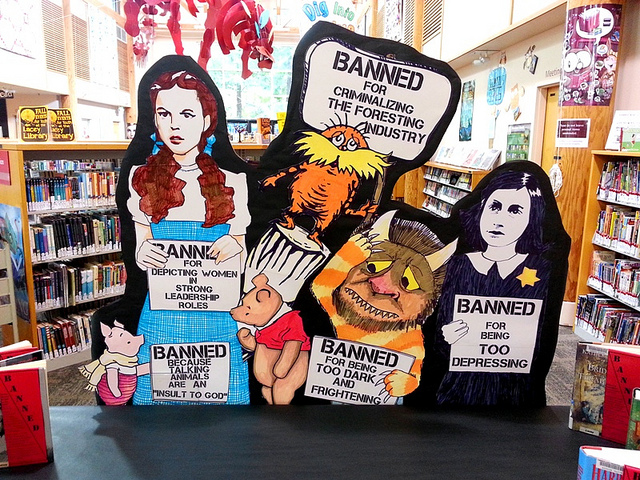
Attempts to censor material, such as banning books, typically attract a great deal of controversy and debate.
Timberland Regional Library – Banned Books Display At The Lacey Library – CC BY-NC-ND 2.0.
To fully understand the issues of censorship and freedom of speech and how they apply to modern media, we must first explore the terms themselves. Censorship is defined as suppressing or removing anything deemed objectionable. A common, everyday example can be found on the radio or television, where potentially offensive words are “bleeped” out. More controversial is censorship at a political or religious level. If you’ve ever been banned from reading a book in school, or watched a “clean” version of a movie on an airplane, you’ve experienced censorship.
Much as media legislation can be controversial due to First Amendment protections, censorship in the media is often hotly debated. The First Amendment states that “Congress shall make no law…abridging the freedom of speech, or of the press (Case Summaries).” Under this definition, the term “speech” extends to a broader sense of “expression,” meaning verbal, nonverbal, visual, or symbolic expression. Historically, many individuals have cited the First Amendment when protesting FCC decisions to censor certain media products or programs. However, what many people do not realize is that U.S. law establishes several exceptions to free speech, including defamation, hate speech, breach of the peace, incitement to crime, sedition, and obscenity.
Classifying Material as Indecent, Obscene, or Profane
To comply with U.S. law, the FCC prohibits broadcasters from airing obscene programming. The FCC decides whether or not material is obscene by using a three-prong test.
Obscene material:
- causes the average person to have lustful or sexual thoughts;
- depicts lawfully offensive sexual conduct; and
- lacks literary, artistic, political, or scientific value.
Material meeting all of these criteria is officially considered obscene and usually applies to hard-core pornography (Federal Communications Commission). “Indecent” material, on the other hand, is protected by the First Amendment and cannot be banned entirely.
Indecent material:
- contains graphic sexual or excretory depictions;
- dwells at length on depictions of sexual or excretory organs; and
- is used simply to shock or arouse an audience.
Material deemed indecent cannot be broadcast between the hours of 6 a.m. and 10 p.m., to make it less likely that children will be exposed to it (Federal Communications Commission).
These classifications symbolize the media’s long struggle with what is considered appropriate and inappropriate material. Despite the existence of the guidelines, however, the process of categorizing materials is a long and arduous one.
There is a formalized process for deciding what material falls into which category. First, the FCC relies on television audiences to alert the agency of potentially controversial material that may require classification. The commission asks the public to file a complaint via letter, e-mail, fax, telephone, or the agency’s website, including the station, the community, and the date and time of the broadcast. The complaint should “contain enough detail about the material broadcast that the FCC can understand the exact words and language used (Federal Communications Commission).” Citizens are also allowed to submit tapes or transcripts of the aired material. Upon receiving a complaint, the FCC logs it in a database, which a staff member then accesses to perform an initial review. If necessary, the agency may contact either the station licensee or the individual who filed the complaint for further information.
Once the FCC has conducted a thorough investigation, it determines a final classification for the material. In the case of profane or indecent material, the agency may take further actions, including possibly fining the network or station (Federal Communications Commission). If the material is classified as obscene, the FCC will instead refer the matter to the U.S. Department of Justice, which has the authority to criminally prosecute the media outlet. If convicted in court, violators can be subject to criminal fines and/or imprisonment (Federal Communications Commission).
Each year, the FCC receives thousands of complaints regarding obscene, indecent, or profane programming. While the agency ultimately defines most programs cited in the complaints as appropriate, many complaints require in-depth investigation and may result in fines called notices of apparent liability (NAL) or federal investigation.
Table 15.1 FCC Indecency Complaints and NALs: 2000–2005
| Year | Total Complaints Received | Radio Programs Complained About | Over-the-Air Television Programs Complained About | Cable Programs Complained About | Total Radio NALs | Total Television NALs | Total Cable NALs |
|---|---|---|---|---|---|---|---|
| 2000 | 111 | 85 | 25 | 1 | 7 | 0 | 0 |
| 2001 | 346 | 113 | 33 | 6 | 6 | 1 | 0 |
| 2002 | 13,922 | 185 | 166 | 38 | 7 | 0 | 0 |
| 2003 | 166,683 | 122 | 217 | 36 | 3 | 0 | 0 |
| 2004 | 1,405,419 | 145 | 140 | 29 | 9 | 3 | 0 |
| 2005 | 233,531 | 488 | 707 | 355 | 0 | 0 | 0 |
|
|
Violence and Sex: Taboos in Entertainment
Although popular memory thinks of old black-and-white movies as tame or sanitized, many early filmmakers filled their movies with sexual or violent content. Edwin S. Porter’s 1903 silent film The Great Train Robbery , for example, is known for expressing “the appealing, deeply embedded nature of violence in the frontier experience and the American civilizing process,” and showcases “the rather spontaneous way that the attendant violence appears in the earliest developments of cinema (Film Reference).” The film ends with an image of a gunman firing a revolver directly at the camera, demonstrating that cinema’s fascination with violence was present even 100 years ago.
Porter was not the only U.S. filmmaker working during the early years of cinema to employ graphic violence. Films such as Intolerance (1916) and The Birth of a Nation (1915) are notorious for their overt portrayals of violent activities. The director of both films, D. W. Griffith, intentionally portrayed content graphically because he “believed that the portrayal of violence must be uncompromised to show its consequences for humanity (Film Reference).”
Although audiences responded eagerly to the new medium of film, some naysayers believed that Hollywood films and their associated hedonistic culture was a negative moral influence. As you read in Chapter 8 “Movies” , this changed during the 1930s with the implementation of the Hays Code. Formally termed the Motion Picture Production Code of 1930, the code is popularly known by the name of its author, Will Hays, the chairman of the industry’s self-regulatory Motion Picture Producers and Distributors Association (MPPDA), which was founded in 1922 to “police all in-house productions (Film Reference).” Created to forestall what was perceived to be looming governmental control over the industry, the Hays Code was, essentially, Hollywood self-censorship. The code displayed the motion picture industry’s commitment to the public, stating:
Motion picture producers recognize the high trust and confidence which have been placed in them by the people of the world and which have made motion pictures a universal form of entertainment…. Hence, though regarding motion pictures primarily as entertainment without any explicit purposes of teaching or propaganda, they know that the motion picture within its own field of entertainment may be directly responsible for spiritual or moral progress, for higher types of social life, and for much correct thinking (Arts Reformation).
Among other requirements, the Hays Code enacted strict guidelines on the portrayal of violence. Crimes such as murder, theft, robbery, safecracking, and “dynamiting of trains, mines, buildings, etc.” could not be presented in detail (Arts Reformation). The code also addressed the portrayals of sex, saying that “the sanctity of the institution of marriage and the home shall be upheld. Pictures shall not infer that low forms of sex relationship are the accepted or common thing (Arts Reformation).”
Figure 15.4
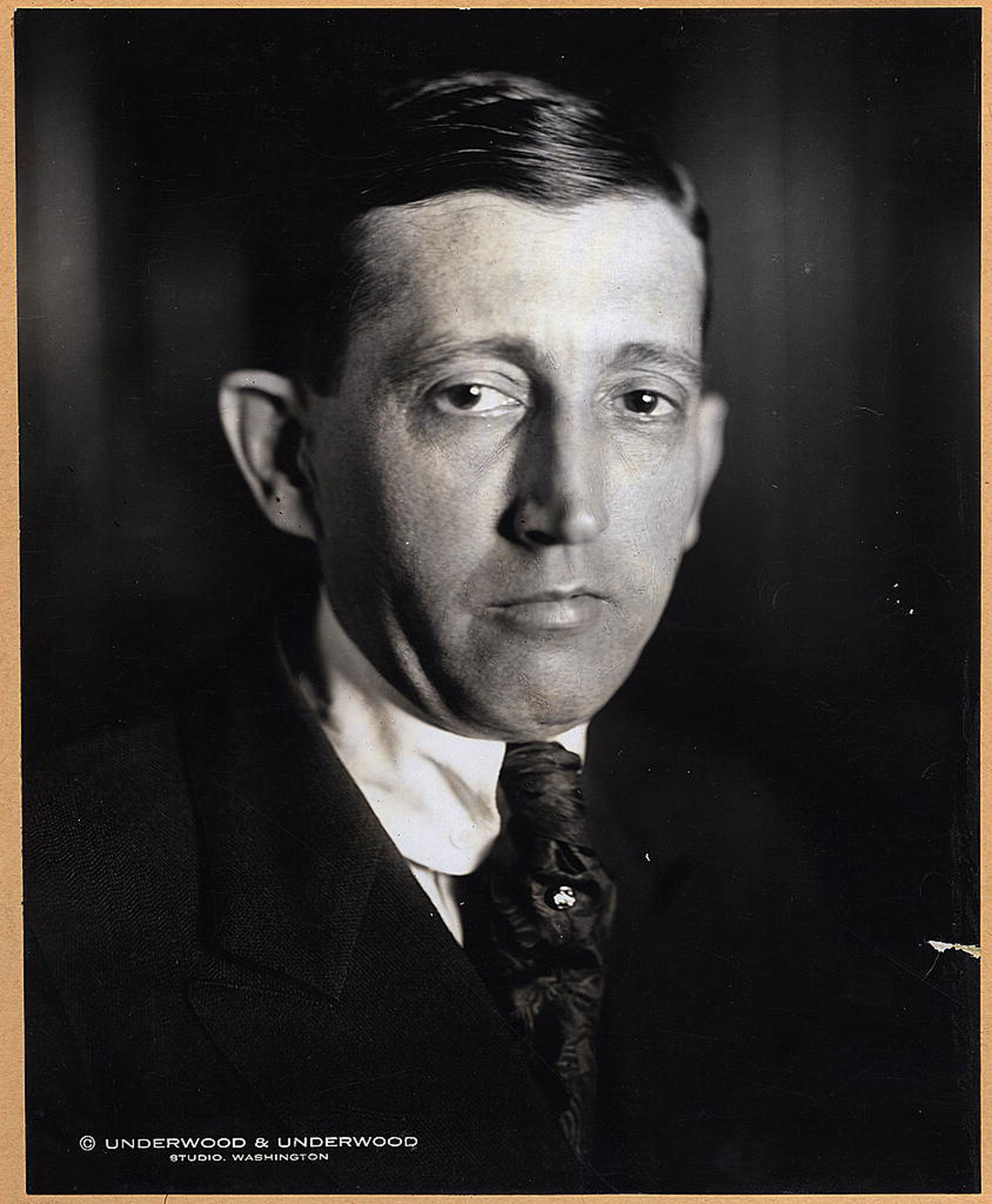
As the chairman of the Motion Picture Producers and Distributors Association, Will Hays oversaw the creation of the industry’s self-censoring Hays Code.
Wikimedia Commons – public domain.
As television grew in popularity during the mid-1900s, the strict code placed on the film industry spread to other forms of visual media. Many early sitcoms, for example, showed married couples sleeping in separate twin beds to avoid suggesting sexual relations.
By the end of the 1940s, the MPPDA had begun to relax the rigid regulations of the Hays Code. Propelled by the changing moral standards of the 1950s and 1960s, this led to a gradual reintroduction of violence and sex into mass media.
Ratings Systems
As filmmakers began pushing the boundaries of acceptable visual content, the Hollywood studio industry scrambled to create a system to ensure appropriate audiences for films. In 1968, the successor of the MPPDA, the Motion Picture Association of America (MPAA), established the familiar film ratings system to help alert potential audiences to the type of content they could expect from a production.
Film Ratings
Although the ratings system changed slightly in its early years, by 1972 it seemed that the MPAA had settled on its ratings. These ratings consisted of G (general audiences), PG (parental guidance suggested), R (restricted to ages 17 or up unless accompanied by a parent), and X (completely restricted to ages 17 and up). The system worked until 1984, when several major battles took place over controversial material. During that year, the highly popular films Indiana Jones and the Temple of Doom and Gremlins both premiered with a PG rating. Both films—and subsequently the MPAA—received criticism for the explicit violence presented on screen, which many viewers considered too intense for the relatively mild PG rating. In response to the complaints, the MPAA introduced the PG-13 rating to indicate that some material may be inappropriate for children under the age of 13.
Another change came to the ratings system in 1990, with the introduction of the NC-17 rating. Carrying the same restrictions as the existing X rating, the new designation came at the behest of the film industry to distinguish mature films from pornographic ones. Despite the arguably milder format of the rating’s name, many filmmakers find it too strict in practice; receiving an NC-17 rating often leads to a lack of promotion or distribution because numerous movie theaters and rental outlets refuse to carry films with this rating.
Television and Video Game Ratings
Regardless of these criticisms, most audience members find the rating system helpful, particularly when determining what is appropriate for children. The adoption of industry ratings for television programs and video games reflects the success of the film ratings system. During the 1990s, for example, the broadcasting industry introduced a voluntary rating system not unlike that used for films to accompany all TV shows. These ratings are displayed on screen during the first 15 seconds of a program and include TV-Y (all children), TV-Y7 (children ages 7 and up), TV-Y7-FV (older children—fantasy violence), TV-G (general audience), TV-PG (parental guidance suggested), TV-14 (parents strongly cautioned), and TV-MA (mature audiences only).
Table 15.2 Television Ratings System
| Rating | Meaning | Examples of Programs |
|---|---|---|
| TV-Y | Appropriate for all children | , , |
| TV-Y7 | Designed for children ages 7 and up | , |
| TV-Y7-FV | Directed toward older children; includes depictions of fantasy violence | , , |
| TV-G | Suitable for general audiences; contains little or no violence, no strong language, and little or no sexual material | , , |
| TV-PG | Parental guidance suggested | , , |
| TV-14 | Parents strongly cautioned; contains suggestive dialogue, strong language, and sexual or violent situations | , , |
| TV-MA | Mature audiences only | , , |
Source: http://www.tvguidelines.org/ratings.htm
At about the same time that television ratings appeared, the Entertainment Software Rating Board was established to provide ratings on video games. Video game ratings include EC (early childhood), E (everyone), E 10+ (ages 10 and older), T (teen), M (mature), and AO (adults only).
Table 15.3 Video Game Ratings System
| Rating | Meaning | Examples of Games |
|---|---|---|
| EC | Designed for early childhood, children ages 3 and older | , , |
| E | Suitable for everyone over the age of 6; contains minimal fantasy violence and mild language | , , , |
| E 10+ | Appropriate for ages 10 and older; may contain more violence and/or slightly suggestive themes | , , , |
| T | Content is appropriate for teens (ages 13 and older); may contain violence, crude humor, sexually suggestive themes, use of strong language, and/or simulated gambling | , , |
| M | Mature content for ages 17 and older; includes intense violence and/or sexual content | , , , |
| AO | Adults (18+) only; contains graphic sexual content and/or prolonged violence | , |
Source: http://www.esrb.org/ratings/ratings_guide.jsp
Even with these ratings, the video game industry has long endured criticism over violence and sex in video games. One of the top-selling video game series in the world, Grand Theft Auto , is highly controversial because players have the option to solicit prostitution or murder civilians (Media Awareness). In 2010, a report claimed that “38 percent of the female characters in video games are scantily clad, 23 percent baring breasts or cleavage, 31 percent exposing thighs, another 31 percent exposing stomachs or midriffs, and 15 percent baring their behinds (Media Awareness).” Despite multiple lawsuits, some video game creators stand by their decisions to place graphic displays of violence and sex in their games on the grounds of freedom of speech.
Key Takeaways
- The U.S. Government devised the three-prong test to determine if material can be considered “obscene.” The FCC applies these guidelines to determine whether broadcast content can be classified as profane, indecent, or obscene.
- Established during the 1930s, the Hays Code placed strict regulations on film, requiring that filmmakers avoid portraying violence and sex in films.
- After the decline of the Hays Code during the 1960s, the MPAA introduced a self-policed film ratings system. This system later inspired similar ratings for television and video game content.
Look over the MPAA’s explanation of each film rating online at http://www.mpaa.org/ratings/what-each-rating-means . View a film with these requirements in mind and think about how the rating was selected. Then answer the following short-answer questions. Each response should be a minimum of one paragraph.
- Would this material be considered “obscene” under the Hays Code criteria? Would it be considered obscene under the FCC’s three-prong test? Explain why or why not. How would the film be different if it were released in accordance to the guidelines of the Hays Code?
- Do you agree with the rating your chosen film was given? Why or why not?
Arts Reformation, “The Motion Picture Production Code of 1930 (Hays Code),” ArtsReformation, http://www.artsreformation.com/a001/hays-code.html .
Case Summaries, “First Amendment—Religion and Expression,” http://caselaw.lp.findlaw.com/data/constitution/amendment01/ .
Federal Communications Commission, “Obscenity, Indecency & Profanity: Frequently Asked Questions,” http://www.fcc.gov/eb/oip/FAQ.html .
Film Reference, “Violence,” Film Reference, http://www.filmreference.com/encyclopedia/Romantic-Comedy-Yugoslavia/Violence-BEGINNINGS.html .
Media Awareness, Media Issues, “Sex and Relationships in the Media,” http://www.media-awareness.ca/english/issues/stereotyping/women_and_girls/women_sex.cfm .
Media Awareness, Media Issues, “Violence in Media Entertainment,” http://www.media-awareness.ca/english/issues/violence/violence_entertainment.cfm .
Understanding Media and Culture Copyright © 2016 by University of Minnesota is licensed under a Creative Commons Attribution-NonCommercial-ShareAlike 4.0 International License , except where otherwise noted.
- Introduction
- Finding articles & journal titles
- Media literacy
- Investigative journalism
- Photojournalism
- Sports journalism
- Warfare and journalism
- How mass media sees Journalists/Journalism
- Television news
- Ethnicity and journalism
- Women and journalism
- Alternative media
- Future of Media
- Internet resources
- Managing citations
- Scholarly communication This link opens in a new window
Subject Librarian

Other library resource(s)

- Freedom of the press: a global survey of media independence by Freedom House Call Number: Electronic resource This site gives you access to Freedom House's annual survey of press freedom around the world. The surveys from 2002 to the present are available online.

In the Library's collection
There are several subject headings you can use to find books and other resources on censorship . The following subject headings are helpful:
- freedom of the press The call number range is KF 4770 through KF 4775 located on Berry Level 4 .
- government and the press
- press and politics
- journalism political aspects
Introductory reading(s)
Selected book titles
Finding articles
To find articles on censorship, you can search in Communication and Mass Media Complete ( CMMC ), Web of Science or the search box at the top of the page.
Internet resource(s)
- << Previous: Television news
- Next: Ethnicity and journalism >>
- Last Updated: Jun 20, 2024 2:03 PM
- URL: https://researchguides.dartmouth.edu/journalism
Threats to freedom of press: Violence, disinformation & censorship

The free flow of ideas: Freedom of the press, the journalists on the frontline
The way we see the world and act on it depends on the information we have. This is why freedom of expression and freedom of the press are fundamental rights, and the free flow of ideas is a key driver of vibrant societies and human progress. UNESCO works to reinforce the tools, skills and conditions that make these rights real.
Peter R. De Vries was on his way to a car park, walking past crowds of people enjoying post-work drinks in the heart of Amsterdam. It was the early evening of 6 July 2021 and the veteran crime journalist had just left a nearby TV studio, where he had appeared as a talk show guest.
De Vries was a household name in the Netherlands, where his own TV show had run for 17 years, working with crime victims’ families, pursuing unsolved cases and exposing miscarriages of justice. The journalist had recently refused police protection after receiving death threats. A year earlier, he had agreed to act as an adviser to the key prosecution witness against the suspected head of a cocaine trafficking gang.
As De Vries walked to his car, several bullets were fired at him. He died from his injuries nine days later.
Threats and violence against journalists
De Vries’ death prompted outpourings of condemnation and anger in Europe. Yet, many journalists and reporters around the world today risk their lives to uncover the truth. Every four days a journalist is killed in the world. In 2020 alone, according to UNESCO, 62 journalists were killed just for doing their jobs. Between 2006 and 2020, over 1,200 media professionals lost their lives in the same way. In nine out of ten cases, the killers go unpunished.
In many countries investigating corruption, trafficking, human rights violations, and political or environmental issues puts journalists’ lives at risk.
62 journalists killed in 2020,
just for doing their jobs: UNESCO
Crimes against journalists have an enormous impact on society as a whole, because they prevent people from making informed decisions.

To help create the kind of environment journalists need to perform their vital work, UNESCO has set up several initiatives, including a global plan of action for the safety of journalists, in order to support Member States to establish or improve mechanisms for prevention, protection and prosecution to bring justice to cases of murdered journalists. One key aspect of UNESCO’s work is first and foremost to report and publicly condemn all cases of killing of journalists. UNESCO also produces training materials and best practices to help improve journalists’ skills and knowledge on international standards for freedom of expression, investigative journalism and reporting on conflicts.
For the past 40 years, UNESCO’s International Programme for the Development of Communication (IPDC) has focused on targeting the most pressing issues concerning communication development around the world. It helps keep journalists safe, supports the development of media in countries where it is most needed, promotes freedom of expression and public access to information.
UNESCO's initiatives
Fostering Freedom of Expression
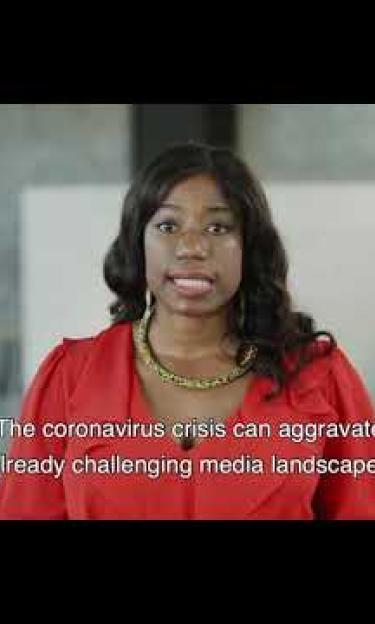
Women journalists facing risks and abuse
Across the world, journalists face countless threats every day, ranging from kidnapping, torture and arbitrary detention to disinformation campaigns and harassment, especially on social media. Women journalists are at particular risk.
According to UNESCO research, 73 per cent of women journalists surveyed said they had been threatened, intimidated and insulted online in connection with their work. Often, the failure to investigate and address online attacks has real-life consequences for women journalists, affecting their mental and physical health. In some cases, online threats can escalate to physical violence and even murder, as the murder of Maltese journalist Daphne Caruana Galizia in 2017 demonstrated.

#JournalistsToo:
For many years, Caruana Galizia had been the most prominent investigative journalist in Malta. She had worked as a columnist and editor in various newspapers. She later set up the website Running Commentary, where she published some of her most significant investigative journalism, exposing tax abuse and corruption in Malta and abroad. Harassment, threats and attempts to silence the journalist had been a constant presence throughout her career.
Online threats and violence against women journalists are designed to belittle, humiliate and shame them, as well as induce fear, silence and discredit them professionally. To respond to increasing threats against women journalists, UNESCO has published a research paper aimed at associations, politicians and governments: The Chilling . It seeks to promote discussion about effective legislative and organizational initiatives that are designed to protect women journalists.
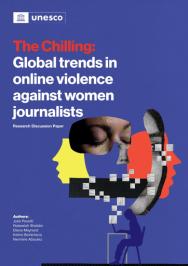
Training judges and prosecutors to defend press freedom
Caruana Galizia’s biggest fear was that her example of physical threats, online harassments and libel lawsuits might discourage other journalists from speaking out. At the time of her death, Caruana Galizia was facing 48 libel suits. Award-winning journalist and Nobel Peace Prize recipient Maria Ressa also faced several lawsuits before being found guilty of libel in the Philippines in 2020.

What you are seeing is death by a thousand cuts for press freedom and democracy. It joins the messaging that was pushed out on social media that “journalists equal criminals.
Ressa and a former colleague at the news site she founded, Rappler, were convicted of cyber libel by a court in Manila after they published an article linking a businessman to illegal activities. During her career, Ressa has been arrested and has been subject to a sustained campaign of gendered online abuse, threats and harassment, which at one point, resulted in her receiving an average of over 90 hateful messages an hour on Facebook.
Often based on meritless or exaggerated claims, these lawsuits are brought in order to pressure a journalist or human rights defender, rather than to vindicate a right.
That is why judges and prosecutors play an important role in protecting journalists from threats and harassment, as well as promoting prompt and effective criminal proceedings when attacks occur.
When attacks against journalists go unpunished, the legal system and safety frameworks have failed everyone.
In recent years, UNESCO has trained nearly 23,000 judicial officials, including judges, prosecutors and lawyers, through several workshops on media and journalist law, training courses and online webinars, in partnership with universities and educational institutions like the Knight Center for Journalism at the University of Austin, Texas (USA). Training focuses on international standards related to freedom of expression and the safety of journalists, placing a particular focus on issues of impunity. In 2021, UNESCO’s online conference The role of the judiciary and international cooperation to foster safety of journalists – What works? explored effective ways in which judges, prosecutors and lawyers, as well as regional human rights courts and judicial training institutes, can combat impunity for crimes against journalists.
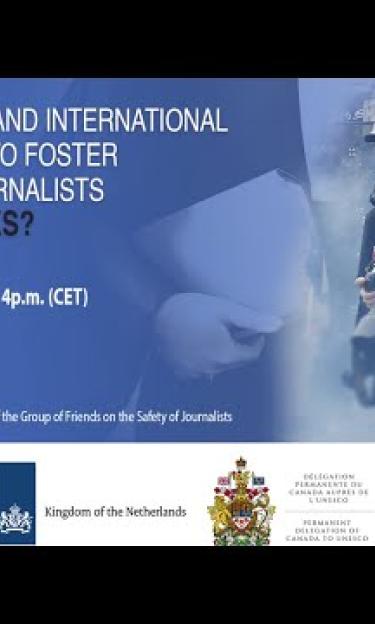
The fight against misinformation and censorship
The threats to freedom of expression and democracy also come from misinformation and censorship. The COVID-19 pandemic and the ensuing pandemic of misinformation have demonstrated that access to facts and science can be a matter of life and death. In the first three months of 2020, almost 6,000 people around the world were hospitalized because of coronavirus misinformation, according to a paper published in the American Journal of Tropical Medicine and Hygiene . During this period, researchers say at least 800 people may have died due to misinformation related to COVID-19.
In May 2020, at the very beginning of the pandemic, the Knight Center, with the support of UNESCO and the World Health Organization (WHO), launched an online course on how to empower journalists, communication workers and content creators countering the phenomenon of disinformation related to the pandemic. The course attracted nearly 9,000 students from 162 countries. ‘2020 was surely the most important year for the fact-checking community,’ said journalist Cristina Tardáguila, who was the course instructor and has been involved in global initiatives against disinformation as associate director of the International Fact-Checking Network (IFCN).
Journalism in a Pandemic: Covering COVID-19 Now and in the Future is an online self-directed course available in eight languages: Arabic , Chinese , English , French , Hindi , Portuguese , Russian and Spanish .
Journalists covering the rollout of COVID-19 vaccines have received support through a live webinar, Covering the COVID-19 Vaccines: What Journalists Need to Know. The recording is now available in 13 languages : Arabic, Bambara, Chinese, Dari, English, French, Guarani, Hindi, Pashto, Portuguese, Russian, Spanish and Wolof.
The media can also take an important part in understanding complex issues such as climate change and fighting the misinformation that surrounds it. In the face of climate change, journalists have the ability to enlighten the public and be the link between scientists and citizens by highlighting the urgency of the situation, but also tell stories that are positive and inspire solutions.
Getting the Message Across: Reporting on Climate Change and Sustainable Development in Asia and the Pacific
UNESCO has supported the publication of a handbook for journalists covering climate change. Journalists are key to ensuring that stories of destruction as well as of resistance are shared, in order to get the message across about climate change and avoid misinformation.
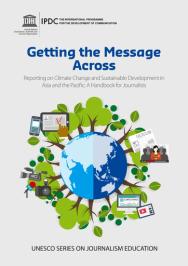
The power of community radios
The struggle to protect journalists and promote freedom of expression is just one of the pillars helping build knowledge societies that have the power to transform economies and communities. Universal access to information and knowledge as well as the respect for cultural and linguistic diversity are essential to building peace, sustainable economic development and intercultural dialogue.
The Syrian Hour is a UNESCO-funded project that produces a bi-weekly radio programme, aired on Yarmouk FM radio station in Irbid, northern Jordan, where there is a large Syrian refugee population.
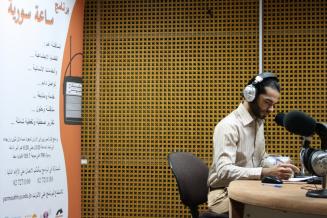
Syrian Hour
The programme trains young Syrians in radio broadcasting skills to host the shows while the shows themselves provide vital information and support to displaced Syrian refugees residing in Jordan. Majd Al Sammouri is one of the young people being trained to host The Syrian Hour.
The first paths of my dreams were at the Faculty of Media and Mass Communication at the University of Damascus, a road I thought was lost forever after finding refuge in Jordan. Yarmouk FM was the compass that put me back to the streets of my dreams.
Many Syrian refugees who fled the war to Jordan still lack awareness about their security, liberty and protection rights and what is available to them in terms of food-assistance, education, health or psychosocial support. Often, their precarious refugee status makes them too afraid to approach authorities and humanitarian organizations.
Majd and his young colleagues provide much-needed reliable information and support to the refugee community.
Community radio is a powerful tool because it has the potential to reach out to people with little or no access to information. It is an efficient mechanism for educating and informing people living in remote areas about key issues such as health, education and sustainable development.
UNESCO is supporting and promoting community radios as a means to facilitate social communication and support democratic processes within societies.
Community radios are also being used to promote oral traditions. For example, in Bandafassi, Senegal, the community radio broadcasts stories and proverbs, traditional music and the history of the various villages. This is one of the many small steps towards building pluralistic and diverse media that provide free impartial information options to empower the public to make their choices towards peace, sustainability, poverty eradication and human rights.
UNESCO is supporting and promoting community radios
Fostering freedom of speech.
UNESCO works to foster free, independent and pluralistic media in print, broadcast and online. Media that adhere to this model enhance freedom of speech as well as contribute to peace, sustainability, poverty eradication and human rights.
#TruthNeverDies
#TruthNeverDies is a campaign developed jointly by UNESCO and communication agency DDB Paris to commemorate the International Day to End Impunity for Crimes against Journalists on 2 November.

Women Make the News
Women Make the News is a global initiative aimed at raising awareness on issues relating to gender equality in and through the media, driving debate and encouraging action-oriented solutions to meet global objectives.

#HerMomentsMatter
#HerMomentsMatter is a continuation of UNESCO’s World Radio Day campaign and aims to promote fairer coverage of women athletes. Women represent just 7 per cent of sportspeople seen, heard or read about in the media, while only 4 per cent of sports stories focus primarily on women.

Remote Radio Week
Community media, whether broadcast or online, are key to ensuring media pluralism and freedom of expression. They are also an indicator of a healthy democratic society.
In partnership with the World Health Organization (WHO), UNESCO has launched a free online training for radio stations to develop their capacities to broadcast remotely.
AI and Facial Recognition webinar
This webinar about artificial intelligence (AI) and facial recognition, organized by UNESCO, touches on the pressing issues of facial recognition and the concerns it raises about the widespread adoption of AI and human rights. As AI is developing rapidly, it is important to understand its developments, which may have profound and potentially adverse impacts on individuals and society.
Webinar on Artificial Intelligence and Facial Recognition
World atlas of languages.
The World Atlas of Languages is an unprecedented initiative to preserve, revitalize and promote global linguistic diversity and multilingualism as a unique heritage and treasure of humanity. The project aims to stimulate new research and innovation, create demand for new language resources and tools, help support language policy and legislation, and forge new partnerships and collaboration in the global community to open up access to information.

World Digital Library
Launched in 2009, the World Digital Library is a project of the U.S. Library of Congress, with the support of UNESCO, and contributions from libraries, archives, museums, educational institutions and international organizations around the world. The WDL seeks to preserve and share some of the world’s most important cultural objects, increasing access to cultural treasures and significant historical documents, to enable discovery, scholarship and use.
UNESCO/Guillermo Cano World Press Freedom Prize
Created in 1997, the annual UNESCO/Guillermo Cano World Press Freedom Prize honours an individual, organisation or institution that has made an outstanding contribution to the defence and, or promotion of press freedom anywhere in the world, especially when this has been achieved in the face of danger. It is named after Guillermo Cano Isaza, a Colombian journalist who was assassinated in front of the offices of his newspaper El Espectador in Bogotá, Colombia on 17 December 1986.

UNESCO / Guillermo Cano
World Press Freedom Prize
Related items
- Information and communication
Special Issue: Propaganda
This essay was published as part of the Special Issue “Propaganda Analysis Revisited”, guest-edited by Dr. A. J. Bauer (Assistant Professor, Department of Journalism and Creative Media, University of Alabama) and Dr. Anthony Nadler (Associate Professor, Department of Communication and Media Studies, Ursinus College).
Propaganda, misinformation, and histories of media techniques
Article metrics.
CrossRef Citations
Altmetric Score
PDF Downloads
This essay argues that the recent scholarship on misinformation and fake news suffers from a lack of historical contextualization. The fact that misinformation scholarship has, by and large, failed to engage with the history of propaganda and with how propaganda has been studied by media and communication researchers is an empirical detriment to it, and serves to make the solutions and remedies to misinformation harder to articulate because the actual problem they are trying to solve is unclear.
School of Media and Communication, University of Leeds, UK

Introduction
Propaganda has a history and so does research on it. In other words, the mechanisms and methods through which media scholars have sought to understand propaganda—or misinformation, or disinformation, or fake news, or whatever you would like to call it—are themselves historically embedded and carry with them underlying notions of power and causality. To summarize the already quite truncated argument below, the larger conceptual frameworks for understanding information that is understood as “pernicious” in some way can be grouped into four large categories: studies of propaganda, the analysis of ideology and its relationship to culture, notions of conspiracy theory, and finally, concepts of misinformation and its impact. The fact that misinformation scholarship generally proceeds without acknowledging these theoretical frameworks is an empirical detriment to it and serves to make the solutions and remedies to misinformation harder to articulate because the actual problem to be solved is unclear.
The following pages discuss each of these frameworks—propaganda, ideology, conspiracy, and misinformation—before returning to the stakes and implications of these arguments for future research on pernicious media content.
Propaganda and applied research
The most salient aspect of propaganda research is the fact that it is powerful in terms of resources while at the same time it is often intellectually derided, or at least regularly dismissed. Although there has been a left-wing tradition of propaganda research housed uneasily within the academy (Herman & Chomsky, 1988; Seldes & Seldes, 1943), this is not the primary way in which journalism or media messaging has been understood in many journalism schools or mainstream communications departments. This relates, of course, to the institutionalization of journalism and communication studies within the academic enterprise. Within this paradox, we see the greater paradox of communication research as both an applied and a disciplinary field. Propaganda is taken quite seriously by governments, the military, and the foreign service apparatus (Simpson, 1994); at the same time, it has occupied a tenuous conceptual place in most media studies and communications departments, with the dominant intellectual traditions embracing either a “limited effects” notion of what communication “does” or else more concerned with the more slippery concept of ideology (and on that, see more below). There is little doubt that the practical study of the power of messages and the field of communication research grew up together. Summarizing an initially revisionist line of research that has now become accepted within the historiography of the field, Nietzel notes that “from the very beginning, communication research was at least in part designed as an applied science, intended to deliver systematic knowledge that could be used for the business of government to the political authorities.” He adds, however, that
“this context also had its limits, for by the end of the decade, communication research had become established at American universities and lost much of its dependence on state funds. Furthermore, it had become increasingly clear that communication scientists could not necessarily deliver knowledge to the political authorities that could serve as a pattern for political acting (Simpson, 1994 pp. 88–89). From then on, politics and communication science parted ways. Many of the approaches and techniques which seemed innovative and even revolutionary in the 1940s and early 1950s, promising a magic key to managing propaganda activities and controlling public opinion, became routine fields of work, and institutions like the USIA carried out much of this kind of research themselves.” (Nietzel, 2016, p. 66)
It is important to note that this parting of ways did not mean that no one in the United States and the Soviet Union was studying propaganda. American government records document that, in inflation-adjusted terms, total funding for the United States Information Agency (USIA) rose from $1.2 billion in 1955 to $1.7 billion in 1999, shortly before its functions were absorbed into the United States Department of State. And this was dwarfed by Soviet spending, which spent more money jamming Western Radio transmissions alone than the United States did in its entire propaganda budget. Media effects research in the form of propaganda studies was a big and well-funded business. It was simply not treated as such within the traditional academy (Zollman, 2019). It is also important to note that this does not mean that no one in academia studies propaganda or the effect of government messages on willing or unwilling recipients, particularly in fields like health communication (also quite well-funded). These more academic studies, however, were tempered by the generally accepted fact that there existed no decontextualized, universal laws of communication that could render media messages easily useable by interested actors.
Ideology, economics, and false consciousness
If academics have been less interested than governments and health scientists in analyzing the role played by propaganda in the formation of public opinion, what has the academy worried about instead when it comes to the study of pernicious messages and their role in public life? Open dominant, deeply contested line of study has revolved around the concept of ideology. As defined by Raymond Williams in his wonderful Keywords , ideology refers to an interlocking set of ideas, beliefs, concepts, or philosophical principles that are naturalized, taken for granted, or regarded as self-evident by various segments of society. Three controversial and interrelated principles then follow. First, ideology—particularly in its Marxist version—carries with it the implication that these ideas are somehow deceptive or disassociated from what actually exists. “Ideology is then abstract and false thought, in a sense directly related to the original conservative use but with the alternative—knowledge of real material conditions and relationships—differently stated” (Williams, 1976). Second, in all versions of Marxism, ideology is related to economic conditions in some fashion, with material reality, the economics of a situation, usually dominant and helping give birth to ideological precepts. In common Marxist terminology, this is usually described as the relationship between the base (economics and material conditions) and the superstructure (the realm of concepts, culture, and ideas). Third and finally, it is possible that different segments of society will have different ideologies, differences that are based in part on their position within the class structure of that society.
Western Marxism in general (Anderson, 1976) and Antonio Gramsci in particular helped take these concepts and put them on the agenda of media and communications scholars by attaching more importance to “the superstructure” (and within it, media messages and cultural industries) than was the case in earlier Marxist thought. Journalism and “the media” thus play a major role in creating and maintaining ideology and thus perpetuating the deception that underlies ideological operations. In the study of the relationship between the media and ideology, “pernicious messages” obviously mean something different than they do in research on propaganda—a more structural, subtle, reinforcing, invisible, and materially dependent set of messages than is usually the case in propaganda analysis. Perhaps most importantly, little research on media and communication understands ideology in terms of “discrete falsehoods and erroneous belief,” preferring to focus on processes of deep structural misrecognition that serves dominant economic interests (Corner, 2001, p. 526). This obviously marks a difference in emphasis as compared to most propaganda research.
Much like in the study of propaganda, real-world developments have also had an impact on the academic analysis of media ideology. The collapse of communism in the 1980s and 1990s and the rise of neoliberal governance obviously has played a major role in these changes. Although only one amongst a great many debates about the status of ideology in a post-Marxist communications context, the exchange between Corner (2001, 2016) and Downey (2008; Downey et al., 2014) is useful for understanding how scholars have dealt with the relationship between large macro-economic and geopolitical changes in the world and fashions of research within the academy. Regardless of whether concepts of ideology are likely to return to fashion, any analysis of misinformation that is consonant with this tradition must keep in mind the relationship between class and culture, the outstanding and open question of “false consciousness,” and the key scholarly insight that ideological analysis is less concerned with false messages than it is with questions of structural misrecognition and the implications this might have for the maintenance of hegemony.
Postmodern conspiracy
Theorizing pernicious media content as a “conspiracy” theory is less common than either of the two perspectives discussed above. Certainly, conspiratorial media as an explanatory factor for political pathology has something of a post-Marxist (and indeed, postmodern) aura. Nevertheless, there was a period in the 1990s and early 2000s when some of the most interesting notions of conspiracy theories were analyzed in academic work, and it seems hard to deny that much of this literature would be relevant to the current emergence of the “QAnon” cult, the misinformation that is said to drive it, and other even more exotic notions of elites conspiring against the public.
Frederic Jameson has penned remarks on conspiracy theory that represent the starting point for much current writing on the conspiratorial mindset, although an earlier and interrelated vein of scholarship can be found in the work of American writers such as Hofstadter (1964) and Rogin (1986). “Conspiracy is the poor person’s cognitive mapping in the postmodern age,” Jameson writes, “it is a degraded figure of the total logic of late capital, a desperate attempt to represent the latter’s system” (Jameson, 1991). If “postmodernism,” in Jameson’s terms, is marked by a skepticism toward metanarratives, then conspiracy theory is the only narrative system available to explain the various deformations of the capitalist system. As Horn and Rabinach put it:
“The broad interest taken by cultural studies in popular conspiracy theories mostly adopted Jameson’s view and regards them as the wrong answers to the right questions. Showing the symptoms of disorientation and loss of social transparency, conspiracy theorists are seen as the disenfranchised “poor in spirit,” who, for lack of a real understanding of the world they live in, come up with paranoid systems of world explanation.” (Horn & Rabinach, 2008)
Other thinkers, many of them operating from a perch within media studies and communications departments, have tried to take conspiracy theories more seriously (Bratich, 2008; Fenster, 2008; Pratt, 2003; Melley, 2008). The key question for all of these thinkers lies within the debate discussed in the previous section, the degree to which “real material interests” lie behind systems of ideological mystification and whether audiences themselves bear any responsibility for their own predicament. In general, writers sympathetic to Jameson have tended to maintain a Marxist perspective in which conspiracy represents a pastiche of hegemonic overthrow, thus rendering it just another form of ideological false consciousness. Theorists less taken with Marxist categories see conspiracy as an entirely rational (though incorrect) response to conditions of late modernity or even as potentially liberatory. Writers emphasizing that pernicious media content tends to fuel a conspiratorial mindset often emphasize the mediated aspects of information rather than the economics that lie behind these mediations. Both ideological analysis and academic writings on conspiracy theory argue that there is a gap between “what seems to be going on” and “what is actually going on,” and that this gap is maintained and widened by pernicious media messages. Research on ideology tends to see the purpose of pernicious media content as having an ultimately material source that is rooted in “real interests,” while research on conspiracies plays down these class aspects and questions whether any real interests exist that go beyond the exercise of political power.
The needs of informationally ill communities
The current thinking in misinformation studies owes something to all these approaches. But it owes an even more profound debt to two perspectives on information and journalism that emerged in the early 2000s, both of which are indebted to an “ecosystemic” perspective on information flows. One perspective sees information organizations and their audiences as approximating a natural ecosystem, in which different media providers contribute equally to the health of an information environment, which then leads to healthy citizens. The second perspective analyzes the flows of messages as they travel across an information environment, with messages becoming reshaped and distorted as they travel across an information network.
Both of these perspectives owe a debt to the notion of the “informational citizen” that was popular around the turn of the century and that is best represented by the 2009 Knight Foundation report The Information Needs of Communities (Knight Foundation, 2009). This report pioneered the idea that communities were informational communities whose political health depended in large part on the quality of information these communities ingested. Additional reports by The Knight Foundation, the Pew Foundation, and this author (Anderson, 2010) looked at how messages circulated across these communities, and how their transformation impacted community health.
It is a short step from these ecosystemic notions to a view of misinformation that sees it as a pollutant or even a virus (Anderson, 2020), one whose presence in a community turns it toward sickness or even political derangement. My argument here is that the current misinformation perspective owes less to its predecessors (with one key exception that I will discuss below) and more to concepts of information that were common at the turn of the century. The major difference between the concept of misinformation and earlier notions of informationally healthy citizens lies in the fact that the normative standard by which health is understood within information studies is crypto-normative. Where writings about journalism and ecosystemic health were openly liberal in nature and embraced notions of a rational, autonomous citizenry who just needed the right inputs in order to produce the right outputs, misinformation studies has a tendency to embrace liberal behavioralism without embracing a liberal political theory. What the political theory of misinformation studies is, in the end, deeply unclear.
I wrote earlier that misinformation studies owed more to notions of journalism from the turn of the century than it did to earlier traditions of theorizing. There is one exception to this, however. Misinformation studies, like propaganda analysis, is a radically de-structured notion of what information does. Buried within analysis of pernicious information there is
“A powerful cultural contradiction—the need to understand and explain social influence versus a rigid intolerance of the sociological and Marxist perspectives that could provide the theoretical basis for such an understanding. Brainwashing, after all, is ultimately a theory of ideology in the crude Marxian sense of “false consciousness.” Yet the concept of brainwashing was the brainchild of thinkers profoundly hostile to Marxism not only to its economic assumptions but also to its emphasis on structural, rather than individual, causality.” (Melley, 2008, p. 149)
For misinformation studies to grow in such a way that allows it to take its place among important academic theories of media and communication, several things must be done. The field needs to be more conscious of its own history, particularly its historical conceptual predecessors. It needs to more deeply interrogate its informational-agentic concept of what pernicious media content does, and perhaps find room in its arsenal for Marxist notions of hegemony or poststructuralist concepts of conspiracy. Finally, it needs to more openly advance its normative agenda, and indeed, take a normative position on what a good information environment would look like from the point of view of political theory. If this environment is a liberal one, so be it. But this position needs to be stated clearly.
Of course, misinformation studies need not worry about its academic bona fides at all. As the opening pages of this Commentary have shown, propaganda research was only briefly taken seriously as an important academic field. This did not stop it from being funded by the U.S. government to the tune of 1.5 billion dollars a year. While it is unlikely that media research will ever see that kind of investment again, at least by an American government, let’s not forget that geopolitical Great Power conflict has not disappeared in the four years that Donald Trump was the American president. Powerful state forces in Western society will have their own needs, and their own demands, for misinformation research. It is up to the scholarly community to decide how they will react to these temptations.
- Mainstream Media
- / Propaganda
Cite this Essay
Anderson, C. W. (2021). Propaganda, misinformation, and histories of media techniques. Harvard Kennedy School (HKS) Misinformation Review . https://doi.org/10.37016/mr-2020-64
Bibliography
Anderson, C. W. (2010). Journalistic networks and the diffusion of local news: The brief, happy news life of the Francisville Four. Political Communication , 27 (3), 289–309. https://doi.org/10.1080/10584609.2010.496710
Anderson, C. W. (2020, August 10). Fake news is not a virus: On platforms and their effects. Communication Theory , 31 (1), 42–61. https://doi.org/10.1093/ct/qtaa008
Anderson, P. (1976). Considerations on Western Marxism . Verso.
Bratich, J. Z. (2008). Conspiracy panics: Political rationality and popular culture. State University of New York Press.
Corner, J. (2001). ‘Ideology’: A note on conceptual salvage. Media, Culture & Society , 23 (4), 525–533. https://doi.org/10.1177/016344301023004006
Corner, J. (2016). ‘Ideology’ and media research. Media, Culture & Society , 38 (2), 265 – 273. https://doi.org/10.1177/0163443715610923
Downey, J. (2008). Recognition and renewal of ideology critique. In D. Hesmondhaigh & J. Toynbee (Eds.), The media and social theory (pp. 59–74). Routledge.
Downey, J., Titley, G., & Toynbee, J. (2014). Ideology critique: The challenge for media studies. Media, Culture & Society , 36 (6), 878–887. https://doi.org/10.1177/0163443714536113
Fenster (2008). Conspiracy theories: Secrecy and power in American culture (Rev. ed.). University of Minnesota Press.
Herman, E., & Chomsky, N. (1988). Manufacturing consent: The political economy of the mass media. Pantheon Books.
Hofstadter, R. (1964, November). The paranoid style in American politics. Harper’s Magazine.
Horn, E., & Rabinach, A. (2008). Introduction. In E. Horn (Ed.), Dark powers: Conspiracies and conspiracy theory in history and literature (pp. 1–8), New German Critique , 35 (1). https://doi.org/10.1215/0094033x-2007-015
Jameson, F. (1991). Postmodernism, or, the cultural logic of late capitalism . Duke University Press.
The Knight Foundation. (2009). Informing communities: Sustaining democracy in the digital age. https://knightfoundation.org/wp-content/uploads/2019/06/Knight_Commission_Report_-_Informing_Communities.pdf
Melley, T. (2008). Brainwashed! Conspiracy theory and ideology in postwar United States. New German Critique , 35 (1), 145–164. https://doi.org/10.1215/0094033X-2007-023
Nietzel, B. (2016). Propaganda, psychological warfare and communication research in the USA and the Soviet Union during the Cold War. History of the Human Sciences , 29 (4 – 5), 59–76. https://doi.org/10.1177/0952695116667881
Pratt, R. (2003). Theorizing conspiracy. Theory and Society , 32 , 255–271. https://doi.org/10.1023/A:1023996501425
Rogin, M. P. (1986). The countersubversive tradition in American politics. Berkeley Journal of Sociology, 31 , 1 –33. https://www.jstor.org/stable/41035372
Seldes, G., & Seldes, H. (1943). Facts and fascism. In Fact.
Simpson, C. (1994). Science of coercion: Communication research and psychological warfare, 1945–1960. Oxford University Press.
Williams, R. (1976). Keywords: A vocabulary of culture and society . Oxford University Press.
Zollmann, F. (2019). Bringing propaganda back into news media studies. Critical Sociology , 45 (3), 329–345. https://doi.org/10.1177/0896920517731134
This is an open access article distributed under the terms of the Creative Commons Attribution License , which permits unrestricted use, distribution, and reproduction in any medium, provided that the original author and source are properly credited.
Numbers, Facts and Trends Shaping Your World
Read our research on:
Full Topic List
Regions & Countries
- Publications
- Our Methods
- Short Reads
- Tools & Resources
Read Our Research On:
Americans and ‘Cancel Culture’: Where Some See Calls for Accountability, Others See Censorship, Punishment

People have challenged each other’s views for much of human history . But the internet – particularly social media – has changed how, when and where these kinds of interactions occur. The number of people who can go online and call out others for their behavior or words is immense, and it’s never been easier to summon groups to join the public fray .
The phrase “cancel culture” is said to have originated from a relatively obscure slang term – “cancel,” referring to breaking up with someone – used in a 1980s song. This term was then referenced in film and television and later evolved and gained traction on social media. Over the past several years, cancel culture has become a deeply contested idea in the nation’s political discourse . There are plenty of debates over what it is and what it means, including whether it’s a way to hold people accountable, or a tactic to punish others unjustly, or a mix of both. And some argue that cancel culture doesn’t even exist .
To better understand how the U.S. public views the concept of cancel culture, Pew Research Center asked Americans in September 2020 to share – in their own words – what they think the term means and, more broadly, how they feel about the act of calling out others on social media. The survey finds a public deeply divided, including over the very meaning of the phrase.
Pew Research Center has a long history of studying the tone and nature of online discourse as well as emerging internet phenomena. This report focuses on American adults’ perceptions of cancel culture and, more generally, calling out others on social media. For this analysis, we surveyed 10,093 U.S. adults from Sept. 8 to 13, 2020. Everyone who took part is a member of the Center’s American Trends Panel (ATP), an online survey panel that is recruited through national, random sampling of residential addresses. This way nearly all U.S. adults have a chance of selection. The survey is weighted to be representative of the U.S. adult population by gender, race, ethnicity, partisan affiliation, education and other categories. Read more about the ATP’s methodology .
This essay primarily focuses on responses to three different open-ended questions and includes a number of quotations to help illustrate themes and add nuance to the survey findings. Quotations may have been lightly edited for grammar, spelling and clarity. Here are the questions used for this essay , along with responses, and its methodology .
Who’s heard of ‘cancel culture’?
As is often the case when a new term enters the collective lexicon, public awareness of the phrase “cancel culture” varies – sometimes widely – across demographic groups.

Overall, 44% of Americans say they have heard at least a fair amount about the phrase, including 22% who have heard a great deal, according to the Center’s survey of 10,093 U.S. adults, conducted Sept. 8-13, 2020. Still, an even larger share (56%) say they’ve heard nothing or not too much about it, including 38% who have heard nothing at all. (The survey was fielded before a string of recent conversations and controversies about cancel culture.)
Familiarity with the term varies with age. While 64% of adults under 30 say they have heard a great deal or fair amount about cancel culture, that share drops to 46% among those ages 30 to 49 and 34% among those 50 and older.
There are gender and educational differences as well. Men are more likely than women to be familiar with the term, as are those who have a bachelor’s or advanced degree when compared with those who have lower levels of formal education. 1
While discussions around cancel culture can be highly partisan, Democrats and Democratic-leaning independents are no more likely than Republicans and GOP-leaning independents to say they have heard at least a fair amount about the phrase (46% vs. 44%). (All references to Democrats and Republicans in this analysis include independents who lean to each party.)
When accounting for ideology, liberal Democrats and conservative Republicans are more likely to have heard at least a fair amount about cancel culture than their more moderate counterparts within each party. Liberal Democrats stand out as most likely to be familiar with the term.
How do Americans define ‘cancel culture’?
As part of the survey, respondents who had heard about “cancel culture” were given the chance to explain in their own words what they think the term means.

The most common responses by far centered around accountability. Some 49% of those familiar with the term said it describes actions people take to hold others accountable: 2
A small share who mentioned accountability in their definitions also discussed how these actions can be misplaced, ineffective or overtly cruel.
Some 14% of adults who had heard at least a fair amount about cancel culture described it as a form of censorship, such as a restriction on free speech or as history being erased:
A similar share (12%) characterized cancel culture as mean-spirited attacks used to cause others harm:
Five other distinct descriptions of the term cancel culture also appeared in Americans’ responses: people canceling anyone they disagree with, consequences for those who have been challenged, an attack on traditional American values, a way to call out issues like racism or sexism, or a misrepresentation of people’s actions. About one-in-ten or fewer described the phrase in each of these ways.
There were some notable partisan and ideological differences in what the term cancel culture represents. Some 36% of conservative Republicans who had heard the term described it as actions taken to hold people accountable, compared with roughly half or more of moderate or liberal Republicans (51%), conservative or moderate Democrats (54%) and liberal Democrats (59%).
Conservative Republicans who had heard of the term were more likely than other partisan and ideological groups to see cancel culture as a form of censorship. Roughly a quarter of conservative Republicans familiar with the term (26%) described it as censorship, compared with 15% of moderate or liberal Republicans and roughly one-in-ten or fewer Democrats, regardless of ideology. Conservative Republicans aware of the phrase were also more likely than other partisan and ideological groups to define cancel culture as a way for people to cancel anyone they disagree with (15% say this) or as an attack on traditional American society (13% say this).
Click here to explore more definitions and explanations of the term cancel culture .
Does calling people out on social media represent accountability or unjust punishment?

Given that cancel culture can mean different things to different people, the survey also asked about the more general act of calling out others on social media for posting content that might be considered offensive – and whether this kind of behavior is more likely to hold people accountable or punish those who don’t deserve it.
Overall, 58% of U.S. adults say in general, calling out others on social media is more likely to hold people accountable, while 38% say it is more likely to punish people who don’t deserve it. But views differ sharply by party. Democrats are far more likely than Republicans to say that, in general, calling people out on social media for posting offensive content holds them accountable (75% vs. 39%). Conversely, 56% of Republicans – but just 22% of Democrats – believe this type of action generally punishes people who don’t deserve it.
Within each party, there are some modest differences by education level in these views. Specifically, Republicans who have a high school diploma or less education (43%) are slightly more likely than Republicans with some college (36%) or at least a bachelor’s degree (37%) to say calling people out for potentially offensive posts is holding people accountable for their actions. The reverse is true among Democrats: Those with a bachelor’s degree or more education are somewhat more likely than those with a high school diploma or less education to say calling out others is a form of accountability (78% vs. 70%).
Among Democrats, roughly three-quarters of those under 50 (73%) as well as those ages 50 and older (76%) say calling out others on social media is more likely to hold people accountable for their actions. At the same time, majorities of both younger and older Republicans say this action is more likely to punish people who didn’t deserve it (58% and 55%, respectively).
People on both sides of the issue had an opportunity to explain why they see calling out others on social media for potentially offensive content as more likely to be either a form of accountability or punishment. We then coded these answers and grouped them into broad areas to frame the key topics of debates.
Initial coding schemes for each question were derived from reading though the open-ended responses and identifying common themes. Using these themes, coders read each response and coded up to three themes for each response. (If a response mentioned more than three themes, the first three mentioned were coded.)
After all the responses were coded, similarities and groupings among codes both within and across the two questions about accountability and punishment became apparent. As such, answers were grouped into broad areas that framed the biggest points of disagreement between these two groups.
We identified five key areas of disagreement in respondents’ arguments for why they held their views of calling out others, broken down as follows:
- 25% of all adults address topics related to whether people who call out others are rushing to judge or are trying to be helpful
- 14% center on whether calling out others on social media is a productive behavior
- 10% focus on whether free speech or creating a comfortable environment online is more important
- 8% address the differing agendas of those who call out others
- 4% focus on whether speaking up is the best action to take if people find content offensive.
For the codes that make up each of these areas, see the Appendix .
Some 17% of Americans who say that calling out others on social media holds people accountable say it can be a teaching moment that helps people learn from their mistakes and do better in the future. Among those who say calling out others unjustly punishes them, a similar share (18%) say it’s because people are not taking the context of a person’s post or the intentions behind it into account before confronting that person.

In all, five types of arguments most commonly stand out in people’s answers. A quarter of all adults mention topics related to whether people who call out others are rushing to judge or are trying to be helpful; 14% center on whether calling out others on social media is a productive behavior or not; 10% focus on whether free speech or creating a comfortable environment online is more important; 8% address the perceived agendas of those who call out others; and 4% focus on whether speaking up is the best action to take if people find content offensive.
Are people rushing to judge or trying to be helpful?
The most common area of opposing arguments about calling out other people on social media arises from people’s differing perspectives on whether people who call out others are rushing to judge or instead trying to be helpful.
One-in-five Americans who see this type of behavior as a form of accountability point to reasons that relate to how helpful calling out others can be. For example, some explained in an open-ended question that they associate this behavior with moving toward a better society or educating others on their mistakes so they can do better in the future. Conversely, roughly a third (35%) of those who see calling out other people on social media as a form of unjust punishment cite reasons that relate to people who call out others being rash or judgmental. Some of these Americans see this kind of behavior as overreacting or unnecessarily lashing out at others without considering the context or intentions of the original poster. Others emphasize that what is considered offensive can be subjective.
Is calling out others on social media productive behavior?
The second most common source of disagreement centers on the question of whether calling out others can solve anything: 13% of those who see calling out others as a form of punishment touch on this issue in explaining their opinion, as do 16% who see it as a form of accountability. Some who see calling people out as unjust punishment say it solves nothing and can actually make things worse. Others in this group question whether social media is a viable place for any productive conversations or see these platforms and their culture as inherently problematic and sometimes toxic. Conversely, there are those who see calling out others as a way to hold people accountable for what they post or to ensure that people consider the consequences of their social media posts.
Which is more important, free speech or creating a comfortable environment online?
Pew Research Center has studied the tension between free speech and feeling safe online for years, including the increasingly partisan nature of these disputes. This debate also appears in the context of calling out content on social media. Some 12% of those who see calling people out as punishment explain – in their own words – that they are in favor of free speech on social media. By comparison, 10% of those who see it in terms of accountability believe that things said in these social spaces matter, or that people should be more considerate by thinking before posting content that may be offensive or make people uncomfortable.
What’s the agenda behind calling out others online?
Another small share of people mention the perceived agenda of those who call out other people on social media in their rationales for why calling out others is accountability or punishment. Some people who see calling out others as a form of accountability say it’s a way to expose social ills such as misinformation, racism, ignorance or hate, or a way to make people face what they say online head-on by explaining themselves. In all, 8% of Americans who see calling out others as a way to hold people accountable for their actions voice these types of arguments.
Those who see calling others out as a form of punishment, by contrast, say it reflects people canceling anyone they disagree with or forcing their views on others. Some respondents feel people are trying to marginalize White voices and history. Others in this group believe that people who call out others are being disingenuous and doing so in an attempt to make themselves look good. In total, these types of arguments were raised by 9% of people who see calling out others as punishment.
Should people speak up if they are offended?
Arguments for why calling out others is accountability or punishment also involve a small but notable share who debate whether calling others out on social media is the best course of action for someone who finds a particular post offensive. Some 5% of people who see calling out others as punishment say those who find a post offensive should not engage with the post. Instead, they should take a different course of action, such as removing themselves from the situation by ignoring the post or blocking someone if they don’t like what that person has to say. However, 4% of those who see calling out others as a form of accountability believe it is imperative to speak up because saying nothing changes nothing.
Beyond these five main areas of contention, some Americans see shades of gray when it comes to calling out other people on social media and say it can be difficult to classify this kind of behavior as a form of either accountability or punishment. They note that there can be great variability from case to case, and that the efficacy of this approach is by no means uniform: Sometimes those who are being called out may respond with heartfelt apologies but others may erupt in anger and frustration.
Acknowledgments – Appendix – Methodology – Topline
What Americans say about cancel culture and calling out others on social media
Below, we have gathered a selection of quotes from three open-ended survey questions that address two key topics. Americans who’ve heard of the term cancel culture were asked to define what it means to them. After answering a closed-ended question about whether calling out others on social media was more likely to hold people accountable for their actions or punish people who didn’t deserve it, they were asked to explain why they held this view – that is, they were either asked why they saw it as accountability or why they saw it as punishment.
Sign up for our weekly newsletter
Fresh data delivered Saturday mornings
1615 L St. NW, Suite 800 Washington, DC 20036 USA (+1) 202-419-4300 | Main (+1) 202-857-8562 | Fax (+1) 202-419-4372 | Media Inquiries
Research Topics
- Email Newsletters
ABOUT PEW RESEARCH CENTER Pew Research Center is a nonpartisan fact tank that informs the public about the issues, attitudes and trends shaping the world. It conducts public opinion polling, demographic research, media content analysis and other empirical social science research. Pew Research Center does not take policy positions. It is a subsidiary of The Pew Charitable Trusts .
© 2024 Pew Research Center
Media Censorship and Its Impact
The freedom of information, the press and free speech is arguably an important human rights deeply rooted in the structures of democracy. Democracy, which largely derives its origin from the US, is one of the legal rights that should be provided and protected in the modern context (Goldberg, Verhulst and Prosser 207).
Under the UN Declaration of Human Rights, it is a requirement that every person to have the right to freedom of expression and opinion. In addition, the First Amendment of the US constitution prohibits the state to make any law that abridges the people’s freedom of speech and free press.
The media is arguably one of the most important tools that provide people with information as well as channels for expression and making speech. As such, any law that interferes with free media amount to violation of these legal provisions. Nevertheless, some information may be harmful, objectionable, sensitive and incorrect (Goldberg, Verhulst and Prosser 209).
Media censorship has become one of the most important tools through which the government attempts to control the type of information given to the people in order to suppress harmful communication.
Although media censorship is important in avoiding the harmful effects of uncontrolled communication, the government mediated censorship on the media is too much, which amounts to violation of the right to free press, expression and communication. Arguably, there is too much censorship on the media, which keeps important information relating to current political events away from the public.
The US has been enacting laws to control the negative effects of harmful, objectionable, sensitive and politically incorrect information. While this is important for the best interest of the citizens, it is worth noting that some of the enacted laws are excessively suppressing the media.
For instance, the communications decency Act (CDA) of 1996 was enacted with an aim of regulating indecency and obscenity in cyberspace, especially when information is available for children (Wittern-Keller 56). However, the government used this act to suppress the media.
For instance, in 1997, the Supreme Court found the CDA unconstitutional in the case of Reno v. ACLU. When delivering ruling in this case, Justice Stevens held that the act was placing excessive burden on the media, which was unacceptable and unconstitutional (Nelson 88).
The government has also been attempting to suppress the media based on the claims of protecting children rights. For instance, in 1998, the US enacted the Child Online Protection Act, which restricted companies from feeding the minors with harmful materials on the internet (Wittern-Keller 79).
However, the Act was exerting too many restrictions on the free media. For instance, the Supreme Court found this act unconstitutional because it was hindering free speech among the adults, even when child protection from the information is assured.
Over the decades, the American government has used a number of ways to suppress the media through censorship. Currently, too much media censorship through federal and state laws attempts to control the information passed through press. The first amendment to the US federal constitution concerns with the protection of people’s rights to religion, speech, press and peaceful assembly.
Adopted in 1791, the First Amendment is one of the ten amendments that constitute the American Bill of Rights. One of the main purposes of a free media is to provide citizens with information about the things taking place in the government, public and corporate sectors (Gillers 279). The government’s objective of suppressing information, especially which related to political and economic sectors, amounts to violation of the two statutes.
One of the major reasons why the government tends to suppress information is to prevent public anger, which might lead to protests and insecurity. Currently, the office of the president recognizes this. For instance, the office of the president states, “the governments should not keep information confidentially just because public officer bearers might feel embarrassed or because errors and failures might be made public”.
This is an indication that the accountability cannot be achieved without proper information disclosure. The government accepts that some information is not being made public, especially in terms of public finance. The activities taking place at the Wall Street, where allegations of corporate influence on public finance offices are common, is an example of a lack of accountability through information concealing (Gillers 281).
On its part, the government attempts to conceal this kind of information to avoid public rage. In particular, the Occupy Wall Street protests were largely blamed on the excessive media involvement, which led to deviance. Thus, the government seeks to censor the media to avoid release of incorrect information, which amounts to violation of the first amendment and freedom of information act.
Noteworthy, media censorship is important to avoid sharing of the wrong information that may mislead the public. However, using laws to censor the media may lead to over-censorship, which allows only certain government approved data made public while less-attractive but true facts fail to feature in the released news.
This amounts to violation of the freedom to free press. Over-censorship is likely to make public officers hide their activities, which might be corrupt.
In the US, military censorship is an important topic of debate. It is worth noting that information relating to national security is highly sensitive. In addition, the government has the right to hold such information because it is largely a state secret. In any government, the military bears the largest burden in protecting the countries interests and boundaries against enemies.
Control of Information about the military activities is justified. Nevertheless, military censorship in the US had often led to deflection of news that reflects poorly the people in power. For instance, censorship of the media in reporting about the American involvement in Afghanistan and Iraq was partly aimed at hiding information about America’s rogue nature, which led to an unjustified war.
In fact, a lot of information about the country’s failures in finding weapons of mass destruction in Iraq and many instances of torture perpetrated by American and British soldiers in Iraq has been concealed under the pretence of military censorship.
On the other hand, a number of critics argue that censorship is important to restrict rogue media from perpetrating deviance, violence and lawlessness. For instance, critics argue that unrestricted release of information, especially those portraying the people in power negatively, is likely to increase the risk of retaliations by groups or countries that are affected by the information.
For instance, the recent release of information proving that American security agencies have been eavesdropping phone conversations by foreign leaders, including the German presidency, led to bitter relations and speculations between the two nations. Thus, the media must be censored to maintain positive views about the US and enhance her relations with foreign nations, especially her allied in Europe and other regions.
In addition, after the media released Abu Ghraib photos in 2004, Muslim extremists retaliated by beheading Nicholas Berg, and American contractor. They posted the video footage on the internet to show the Americans that their actions have consequences. Arguably, this could be avoided in the media was prohibited from posting Abu Ghraib photos.
In conclusion, the debate about media censorship will remain a contentious issue as long as the country has not developed laws to differentiate between positive censorship and negative concealment of information about leaders. In fact, there must be no political influence on media censorship.
Works Cited
Gillers, Stephen. “A tendency to deprave and corrupt.” Washington Law Review , 85.2, (2007): 276-88. Print.
Goldberg, David, Stefaan Verhulst and Tony Prosser. Regulating the Changing Media: A Comparative Study . New York: Oxford University Press, 2008. Print
Nelson, Samuel. Beyond the First Amendment: The Politics of Free Speech and Pluralism . The Johns Hopkins University Press, 2006. Print
Wittern-Keller, Laura. Freedom of the Screen: Legal Challenges to State Film Censorship, 1915–1981 . Kentucky: University Press of Kentucky, 2008. Print
Cite this paper
- Chicago (N-B)
- Chicago (A-D)
StudyCorgi. (2020, January 13). Media Censorship and Its Impact. https://studycorgi.com/media-censorship-and-its-impact/
"Media Censorship and Its Impact." StudyCorgi , 13 Jan. 2020, studycorgi.com/media-censorship-and-its-impact/.
StudyCorgi . (2020) 'Media Censorship and Its Impact'. 13 January.
1. StudyCorgi . "Media Censorship and Its Impact." January 13, 2020. https://studycorgi.com/media-censorship-and-its-impact/.
Bibliography
StudyCorgi . "Media Censorship and Its Impact." January 13, 2020. https://studycorgi.com/media-censorship-and-its-impact/.
StudyCorgi . 2020. "Media Censorship and Its Impact." January 13, 2020. https://studycorgi.com/media-censorship-and-its-impact/.
This paper, “Media Censorship and Its Impact”, was written and voluntary submitted to our free essay database by a straight-A student. Please ensure you properly reference the paper if you're using it to write your assignment.
Before publication, the StudyCorgi editorial team proofread and checked the paper to make sure it meets the highest standards in terms of grammar, punctuation, style, fact accuracy, copyright issues, and inclusive language. Last updated: January 13, 2020 .
If you are the author of this paper and no longer wish to have it published on StudyCorgi, request the removal . Please use the “ Donate your paper ” form to submit an essay.
Home — Essay Samples — Sociology — Effects of Social Media — Censorship In Social Media
Censorship in Social Media
- Categories: Censorship Effects of Social Media Social Media
About this sample

Words: 812 |
Published: Apr 29, 2022
Words: 812 | Pages: 2 | 5 min read
Works Cited
- Anat, Z. & Fernadez, W. (2016). Countering violent extremism on social media: An analysis of communication campaigns. International Journal of Communication, 10, 5406-5423. https://ijoc.org/index.php/ijoc/article/view/5345/1718
- DeNardis, L., & Hackl, A. M. (2015). Internet fragmentation: An overview. SSRN Electronic Journal.
- Flew, T. (2015). Communication and social media. Oxford University Press.
- Gibson, R. (2019). Freedom of speech and the limits of social media censorship. The Conversation. https://theconversation.com/freedom-of-speech-and-the-limits-of-social-media-censorship-125726
- Gillespie, T. (2018). Custodians of the internet: Platforms, content moderation, and the hidden decisions that shape social media. Yale University Press.
- Hasen, R. L. (2016). Facebook and the new face of media regulation. The University of Chicago Law Review Online, 83, 37-43. https://lawreview.uchicago.edu/sites/lawreview.uchicago.edu/files/uploads/83_u_chi_l_rev_online_37.pdf
- Howard, P. N., Agarwal, S. D., & Hussain, M. M. (2011). When do states disconnect their digital networks? Regime responses to the political uses of social media. The Communication Review, 14(3), 216-232.
- Jørgensen, H. (2018). Facebook and democracy: In defence of an extended understanding of freedom of expression. Information, Communication & Society, 21(10), 1388-1403.
- Mossberger, K. (2008). Virtual Inequality: Beyond the Digital Divide. Georgetown University Press.
- Stevenson, J. (2000). Freedom of speech: The history of an idea. Penguin.

Cite this Essay
Let us write you an essay from scratch
- 450+ experts on 30 subjects ready to help
- Custom essay delivered in as few as 3 hours
Get high-quality help

Dr. Heisenberg
Verified writer
- Expert in: Social Issues Sociology

+ 120 experts online
By clicking “Check Writers’ Offers”, you agree to our terms of service and privacy policy . We’ll occasionally send you promo and account related email
No need to pay just yet!
Related Essays
2 pages / 854 words
2 pages / 966 words
4 pages / 1980 words
1 pages / 666 words
Remember! This is just a sample.
You can get your custom paper by one of our expert writers.
121 writers online

Still can’t find what you need?
Browse our vast selection of original essay samples, each expertly formatted and styled
Related Essays on Effects of Social Media
Bennett, S. (2014). The selfie. Photography and Culture, 7(1), 75-92.Carrotte, E. R., Vella, A. M., Lim, M. S., & Hellard, M. E. (2015). “Fitspiration” on social media: A content analysis of gendered images. Journal of Medical [...]
Anderson, C. A., & Jiang, S. (2018). The value of social media data. Marketing Science, 37(3), 387-402.Boczkowski, P. J., & Mitchelstein, E. (2013). The news gap: When the information preferences of the media and the public [...]
Phillips, D. (2016). The 2016 Cyberbullying Report. Cyberbullying Research Center. . Available: https://www.forbes.com/sites/alicegwalton/2017/06/30/a-run-down-of-social-medias-effects-on-our-mental-health/?sh=5153a3861e2e
Alton, L. (2017, May 15). Is Working From Home Making You Feel Miserable?. NBC news. Retrieved from https://www.inc.com/amy-morin/heres-why-internet-has-made-us-lonelier-than-ever.html
Many of us in this day and age can’t live without our cellphones and especially our social media accounts. We use our social media to get our news, to find out what events are going on in the world, in our communities, in our [...]
Khurana N (2015) The Impact of Social Networking Sites on the Youth. J Mass Communicate Journalism 5:285. doi: 10.4172/2165-7912.1000285Steyer James (2009), “Is Technology Networking Changing Childhood?’- A National Poll by [...]
Related Topics
By clicking “Send”, you agree to our Terms of service and Privacy statement . We will occasionally send you account related emails.
Where do you want us to send this sample?
By clicking “Continue”, you agree to our terms of service and privacy policy.
Be careful. This essay is not unique
This essay was donated by a student and is likely to have been used and submitted before
Download this Sample
Free samples may contain mistakes and not unique parts
Sorry, we could not paraphrase this essay. Our professional writers can rewrite it and get you a unique paper.
Please check your inbox.
We can write you a custom essay that will follow your exact instructions and meet the deadlines. Let's fix your grades together!
Get Your Personalized Essay in 3 Hours or Less!
We use cookies to personalyze your web-site experience. By continuing we’ll assume you board with our cookie policy .
- Instructions Followed To The Letter
- Deadlines Met At Every Stage
- Unique And Plagiarism Free
Search the Holocaust Encyclopedia
- Animated Map
- Discussion Question
- Media Essay
- Oral History
- Timeline Event
- Clear Selections
- Bahasa Indonesia
- Português do Brasil
Featured Content
Find topics of interest and explore encyclopedia content related to those topics
Find articles, photos, maps, films, and more listed alphabetically
For Teachers
Recommended resources and topics if you have limited time to teach about the Holocaust
Explore the ID Cards to learn more about personal experiences during the Holocaust
Timeline of Events
Explore a timeline of events that occurred before, during, and after the Holocaust.
- Introduction to the Holocaust
- Invasion of the Soviet Union, June 1941
- Gay Men under the Nazi Regime
- Paragraph 175 and the Nazi Campaign against Homosexuality
- Lesbians under the Nazi Regime
- What is Antisemitism?
- How Many People did the Nazis Murder?
- Treaty of Versailles
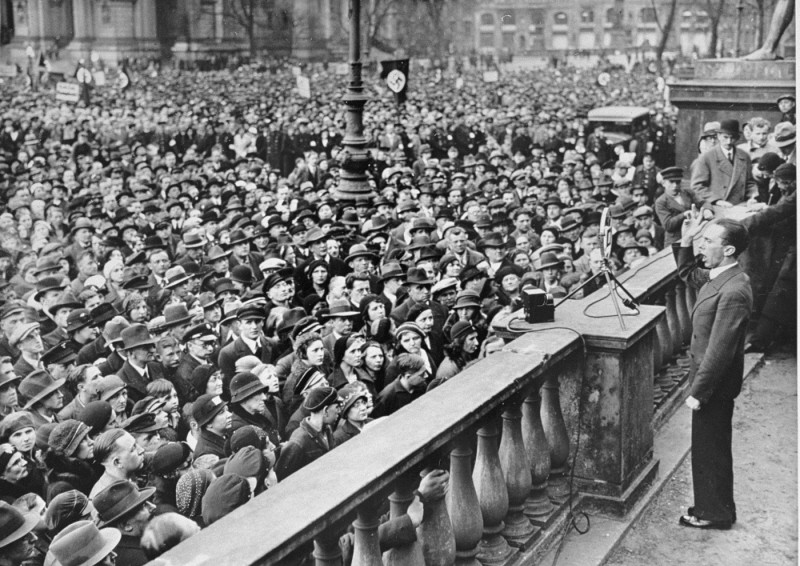

Nazi Propaganda and Censorship
The Nazis used propaganda to win the support of millions of Germans. Censorship helped to suppress ideas that the Nazis saw as threatening.
- Nazi rise to power
- Joseph Goebbels
This content is available in the following languages
Nazi Propaganda and Censorship The Nazis wanted Germans to support the Nazi dictatorship and believe in Nazi ideas. To accomplish this goal, they tried to control forms of communication through censorship and propaganda. This included control of newspapers, magazines, books, art, theater, music, movies, and radio.
How did the Nazis use censorship?
When the Nazis came to power in 1933, the German constitution guaranteed freedom of speech and freedom of the press. Through decrees and laws, the Nazis abolished these civil rights and destroyed German democracy. Starting in 1934, it was illegal to criticize the Nazi government. Even telling a joke about Hitler was considered treachery. People in Nazi Germany could not say or write whatever they wanted.
Examples of censorship under the Nazis included:
- Closing down or taking over anti-Nazi newspapers;
- Controlling what news appeared in newspapers, on the radio, and in newsreels;
- Banning and burning books that the Nazis categorized as un-German;
- Controlling what soldiers wrote home during World War II.
How did the Nazis use propaganda?
The Nazis used propaganda to promote their ideas and beliefs. Beginning in March 1933, the regime tried to centralize its propaganda efforts in a new ministry led by Joseph Goebbels. This ministry was called the Reich Ministry of Enlightenment and Propaganda.
The Nazis used a variety of propaganda tools to spread Nazi ideas. Examples of propaganda under the Nazis included:
- Glorifying Adolf Hitler by using his image on postcards, posters, and in the press;
- Spreading negative images and ideas about Jews in magazines, films, cartoons, and other media;
- Making radios more affordable so that more Germans could listen to Nazi ideas and news;
- Broadcasting Nazi speeches on the radio and public loudspeakers;
- Organizing large and celebratory Nazi Party rallies;
- Creating groups, like the Hitler Youth and League of German Girls, that fostered Nazi ideals.
How did propaganda and censorship work together?
Textbooks are a good example of how propaganda and censorship worked together in the Nazi regime. The Nazis used both propaganda and censorship to control what students read in school. Nazi censors removed some textbooks from classrooms. New textbooks taught students to obey the Nazi Party, love Hitler, and hate Jews.
May 10, 1933 Nazi Book Burnings
During the spring of 1933, Nazi university student organizations, professors, and librarians put together long lists of books they think are un-German. These lists include books written by Jewish authors. They also include books by non-Jewish authors whose ideas conflict with Nazi ideals. On the night of May 10, 1933, Nazis hold book burnings. They march by torchlight in nighttime parades, sing chants, and throw books into huge bonfires. On that night more than 25,000 books are burned.
March 28, 1935 Premiere of the Propaganda Film Triumph of the Will
Leni Riefenstahl’s propaganda film Triumph of the Will premieres in Berlin. The film shows footage taken at the 1934 Nazi Party Rally at Nuremberg. The footage from the rally shows smiling children, cheering crowds, and uniformed Nazis. It features military parades and a speech by Adolf Hitler. Triumph of the Will will become one of the most infamous Nazi propaganda films.
September 1939 Banning Germans from Listening to Foreign Radio
World War II begins on September 1, 1939. Shortly afterwards, the Nazi regime makes listening to foreign radio broadcasts illegal. This is an attempt to control what information Germans hear about the war. The Nazi regime sees news and information from outside Germany as a security threat. They are worried about foreign radio broadcasts, which some Germans can access on their home radios. Later in the war, the regime even sentences people to death for listening to foreign radio stations.
Series: Nazi Rule

Hitler Comes to Power

The Nazi Terror Begins

SS Police State

Nazi Racism

World War II in Europe
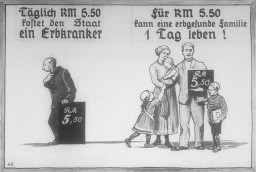
The Murder of People with Disabilities

German Rule in Occupied Europe
Thank you for supporting our work.
We would like to thank Crown Family Philanthropies, Abe and Ida Cooper Foundation, the Claims Conference, EVZ, and BMF for supporting the ongoing work to create content and resources for the Holocaust Encyclopedia. View the list of donor acknowledgement .
- Foreign Affairs
- CFR Education
- Newsletters
Climate Change
Global Climate Agreements: Successes and Failures
Backgrounder by Lindsay Maizland December 5, 2023 Renewing America
- Defense & Security
- Diplomacy & International Institutions
- Energy & Environment
- Human Rights
- Politics & Government
- Social Issues
Myanmar’s Troubled History
Backgrounder by Lindsay Maizland January 31, 2022
- Europe & Eurasia
- Global Commons
- Middle East & North Africa
- Sub-Saharan Africa
How Tobacco Laws Could Help Close the Racial Gap on Cancer
Interactive by Olivia Angelino, Thomas J. Bollyky , Elle Ruggiero and Isabella Turilli February 1, 2023 Global Health Program
- Backgrounders
- Special Projects
China’s Stockpiling and Mobilization Measures for Competition and Conflict Link
Featuring Zongyuan Zoe Liu via U.S.-China Economic and Security Review Commission June 13, 2024
- Centers & Programs
- Books & Reports
- Independent Task Force Program
- Fellowships
Oil and Petroleum Products
Academic Webinar: The Geopolitics of Oil
Webinar with Carolyn Kissane and Irina A. Faskianos April 12, 2023
- State & Local Officials
- Religion Leaders
- Local Journalists
The Rise in LGBTQ+ Hate and Democratic Backsliding
Event with Graeme Reid, Ari Shaw, Maria Sjödin and Nancy Yao June 4, 2024
- Lectureship Series
- Webinars & Conference Calls
- Member Login
Hate Speech on Social Media: Global Comparisons

- Hate speech online has been linked to a global increase in violence toward minorities, including mass shootings, lynchings, and ethnic cleansing.
- Policies used to curb hate speech risk limiting free speech and are inconsistently enforced.
- Countries such as the United States grant social media companies broad powers in managing their content and enforcing hate speech rules. Others, including Germany, can force companies to remove posts within certain time periods.
Introduction
A mounting number of attacks on immigrants and other minorities has raised new concerns about the connection between inflammatory speech online and violent acts, as well as the role of corporations and the state in policing speech. Analysts say trends in hate crimes around the world echo changes in the political climate, and that social media can magnify discord. At their most extreme, rumors and invective disseminated online have contributed to violence ranging from lynchings to ethnic cleansing.
The response has been uneven, and the task of deciding what to censor, and how, has largely fallen to the handful of corporations that control the platforms on which much of the world now communicates. But these companies are constrained by domestic laws. In liberal democracies, these laws can serve to defuse discrimination and head off violence against minorities. But such laws can also be used to suppress minorities and dissidents.
How widespread is the problem?
- Radicalization and Extremism
- Social Media
- Race and Ethnicity
- Censorship and Freedom of Expression
- Digital Policy
Incidents have been reported on nearly every continent. Much of the world now communicates on social media, with nearly a third of the world’s population active on Facebook alone. As more and more people have moved online, experts say, individuals inclined toward racism, misogyny, or homophobia have found niches that can reinforce their views and goad them to violence. Social media platforms also offer violent actors the opportunity to publicize their acts.
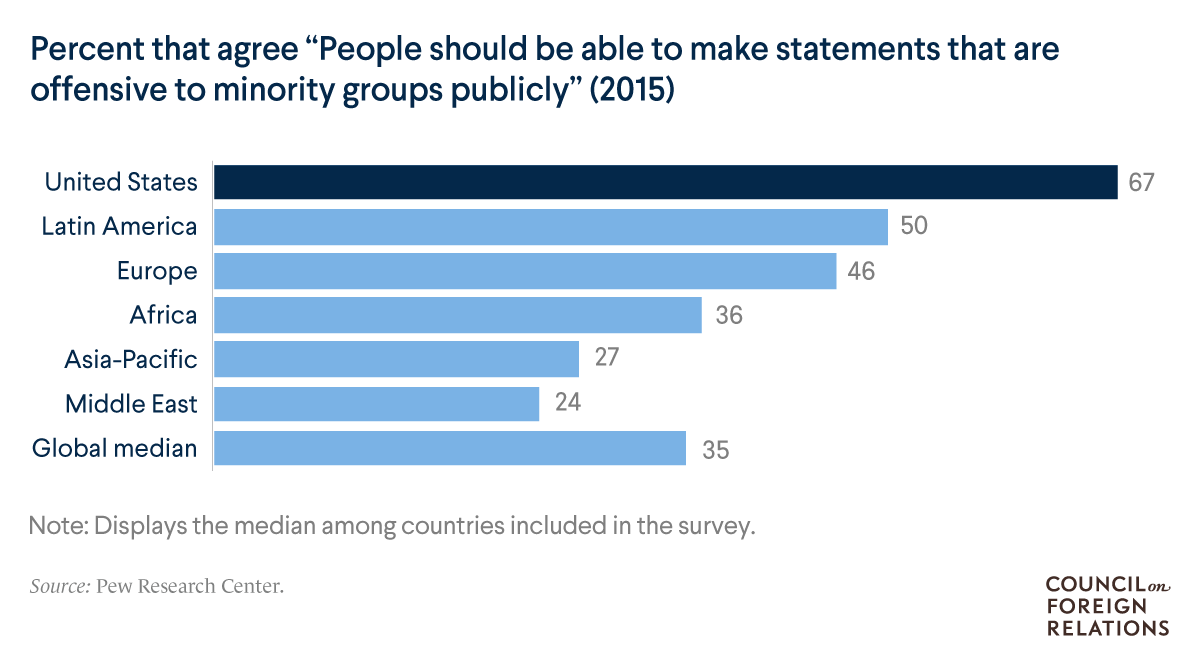
Social scientists and others have observed how social media posts, and other online speech, can inspire acts of violence:
- In Germany a correlation was found between anti-refugee Facebook posts by the far-right Alternative for Germany party and attacks on refugees. Scholars Karsten Muller and Carlo Schwarz observed that upticks in attacks, such as arson and assault, followed spikes in hate-mongering posts .
- In the United States, perpetrators of recent white supremacist attacks have circulated among racist communities online, and also embraced social media to publicize their acts. Prosecutors said the Charleston church shooter , who killed nine black clergy and worshippers in June 2015, engaged in a “ self-learning process ” online that led him to believe that the goal of white supremacy required violent action.
- The 2018 Pittsburgh synagogue shooter was a participant in the social media network Gab , whose lax rules have attracted extremists banned by larger platforms. There, he espoused the conspiracy that Jews sought to bring immigrants into the United States, and render whites a minority, before killing eleven worshippers at a refugee-themed Shabbat service. This “great replacement” trope, which was heard at the white supremacist rally in Charlottesville, Virginia, a year prior and originates with the French far right , expresses demographic anxieties about nonwhite immigration and birth rates.
- The great replacement trope was in turn espoused by the perpetrator of the 2019 New Zealand mosque shootings, who killed forty-nine Muslims at prayer and sought to broadcast the attack on YouTube.
- In Myanmar, military leaders and Buddhist nationalists used social media to slur and demonize the Rohingya Muslim minority ahead of and during a campaign of ethnic cleansing . Though Rohingya comprised perhaps 2 percent of the population, ethnonationalists claimed that Rohingya would soon supplant the Buddhist majority. The UN fact-finding mission said, “Facebook has been a useful instrument for those seeking to spread hate, in a context where, for most users, Facebook is the Internet [PDF].”
- In India, lynch mobs and other types of communal violence, in many cases originating with rumors on WhatsApp groups , have been on the rise since the Hindu-nationalist Bharatiya Janata Party (BJP) came to power in 2014.
- Sri Lanka has similarly seen vigilantism inspired by rumors spread online, targeting the Tamil Muslim minority. During a spate of violence in March 2018, the government blocked access to Facebook and WhatsApp, as well as the messaging app Viber, for a week, saying that Facebook had not been sufficiently responsive during the emergency.
Does social media catalyze hate crimes?
The same technology that allows social media to galvanize democracy activists can be used by hate groups seeking to organize and recruit. It also allows fringe sites, including peddlers of conspiracies, to reach audiences far broader than their core readership. Online platforms’ business models depend on maximizing reading or viewing times. Since Facebook and similar platforms make their money by enabling advertisers to target audiences with extreme precision, it is in their interests to let people find the communities where they will spend the most time.
Users’ experiences online are mediated by algorithms designed to maximize their engagement, which often inadvertently promote extreme content. Some web watchdog groups say YouTube’s autoplay function, in which the player, at the end of one video, tees up a related one, can be especially pernicious. The algorithm drives people to videos that promote conspiracy theories or are otherwise “ divisive, misleading or false ,” according to a Wall Street Journal investigative report. “YouTube may be one of the most powerful radicalizing instruments of the 21st century,” writes sociologist Zeynep Tufekci .
YouTube said in June 2019 that changes to its recommendation algorithm made in January had halved views of videos deemed “borderline content” for spreading misinformation. At that time, the company also announced that it would remove neo-Nazi and white supremacist videos from its site. Yet the platform faced criticism that its efforts to curb hate speech do not go far enough. For instance, critics note that rather than removing videos that provoked homophobic harassment of a journalist, YouTube instead cut off the offending user from sharing in advertising revenue.
How do platforms enforce their rules?
Social media platforms rely on a combination of artificial intelligence, user reporting, and staff known as content moderators to enforce their rules regarding appropriate content. Moderators, however, are burdened by the sheer volume of content and the trauma that comes from sifting through disturbing posts , and social media companies don’t evenly devote resources across the many markets they serve.
A ProPublica investigation found that Facebook’s rules are opaque to users and inconsistently applied by its thousands of contractors charged with content moderation. (Facebook says there are fifteen thousand.) In many countries and disputed territories, such as the Palestinian territories, Kashmir, and Crimea, activists and journalists have found themselves censored , as Facebook has sought to maintain access to national markets or to insulate itself from legal liability. “The company’s hate-speech rules tend to favor elites and governments over grassroots activists and racial minorities,” ProPublica found.
Daily News Brief
A summary of global news developments with cfr analysis delivered to your inbox each morning. weekdays., the world this week, a weekly digest of the latest from cfr on the biggest foreign policy stories of the week, featuring briefs, opinions, and explainers. every friday., think global health.
A curation of original analyses, data visualizations, and commentaries, examining the debates and efforts to improve health worldwide. Weekly.
Addressing the challenges of navigating varying legal systems and standards around the world—and facing investigations by several governments—Facebook CEO Mark Zuckerberg called for global regulations to establish baseline content, electoral integrity, privacy, and data standards.
Problems also arise when platforms’ artificial intelligence is poorly adapted to local languages and companies have invested little in staff fluent in them. This was particularly acute in Myanmar, where, Reuters reported, Facebook employed just two Burmese speakers as of early 2015. After a series of anti-Muslim violence began in 2012, experts warned of the fertile environment ultranationalist Buddhist monks found on Facebook for disseminating hate speech to an audience newly connected to the internet after decades under a closed autocratic system.
Facebook admitted it had done too little after seven hundred thousand Rohingya were driven to Bangladesh and a UN human rights panel singled out the company in a report saying Myanmar’s security forces should be investigated for genocidal intent. In August 2018, it banned military officials from the platform and pledged to increase the number of moderators fluent in the local language.
How do countries regulate hate speech online?
In many ways, the debates confronting courts, legislatures, and publics about how to reconcile the competing values of free expression and nondiscrimination have been around for a century or longer. Democracies have varied in their philosophical approaches to these questions, as rapidly changing communications technologies have raised technical challenges of monitoring and responding to incitement and dangerous disinformation.
United States. Social media platforms have broad latitude [PDF], each establishing its own standards for content and methods of enforcement. Their broad discretion stems from the Communications Decency Act . The 1996 law exempts tech platforms from liability for actionable speech by their users. Magazines and television networks, for example, can be sued for publishing defamatory information they know to be false; social media platforms cannot be found similarly liable for content they host.
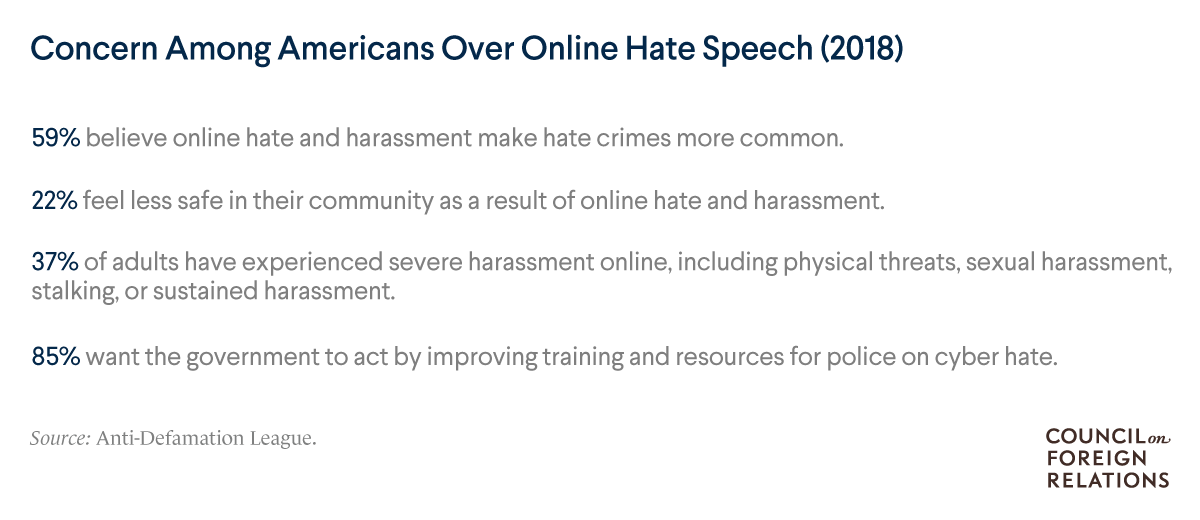
Recent congressional hearings have highlighted the chasm between Democrats and Republicans on the issue. House Judiciary Committee Chairman Jerry Nadler convened a hearing in the aftermath of the New Zealand attack, saying the internet has aided white nationalism’s international proliferation. “The President’s rhetoric fans the flames with language that—whether intentional or not—may motivate and embolden white supremacist movements,” he said, a charge Republicans on the panel disputed. The Senate Judiciary Committee, led by Ted Cruz, held a nearly simultaneous hearing in which he alleged that major social media companies’ rules disproportionately censor conservative speech , threatening the platforms with federal regulation. Democrats on that panel said Republicans seek to weaken policies dealing with hate speech and disinformation that instead ought to be strengthened.
European Union. The bloc’s twenty-eight members all legislate the issue of hate speech on social media differently, but they adhere to some common principles. Unlike the United States, it is not only speech that directly incites violence that comes under scrutiny; so too does speech that incites hatred or denies or minimizes genocide and crimes against humanity. Backlash against the millions of predominantly Muslim migrants and refugees who have arrived in Europe in recent years has made this a particularly salient issue, as has an uptick in anti-Semitic incidents in countries including France, Germany, and the United Kingdom.
In a bid to preempt bloc-wide legislation, major tech companies agreed to a code of conduct with the European Union in which they pledged to review posts flagged by users and take down those that violate EU standards within twenty-four hours. In a February 2019 review, the European Commission found that social media platforms were meeting this requirement in three-quarters of cases .
The Nazi legacy has made Germany especially sensitive to hate speech. A 2018 law requires large social media platforms to take down posts that are “manifestly illegal” under criteria set out in German law within twenty-four hours. Human Rights Watch raised concerns that the threat of hefty fines would encourage the social media platforms to be “overzealous censors.”
New regulations under consideration by the bloc’s executive arm would extend a model similar to Germany’s across the EU, with the intent of “preventing the dissemination of terrorist content online .” Civil libertarians have warned against the measure for its “ vague and broad ” definitions of prohibited content, as well as for making private corporations, rather than public authorities, the arbiters of censorship.
India. Under new social media rules, the government can order platforms to take down posts within twenty-four hours based on a wide range of offenses, as well as to obtain the identity of the user. As social media platforms have made efforts to stanch the sort of speech that has led to vigilante violence, lawmakers from the ruling BJP have accused them of censoring content in a politically discriminatory manner, disproportionately suspending right-wing accounts, and thus undermining Indian democracy . Critics of the BJP accuse it of deflecting blame from party elites to the platforms hosting them. As of April 2018, the New Delhi–based Association for Democratic Reforms had identified fifty-eight lawmakers facing hate speech cases, including twenty-seven from the ruling BJP. The opposition has expressed unease with potential government intrusions into privacy.
Japan. Hate speech has become a subject of legislation and jurisprudence in Japan in the past decade [PDF], as anti-racism activists have challenged ultranationalist agitation against ethnic Koreans. This attention to the issue attracted a rebuke from the UN Committee on the Elimination of Racial Discrimination in 2014 and inspired a national ban on hate speech in 2016, with the government adopting a model similar to Europe’s. Rather than specify criminal penalties, however, it delegates to municipal governments the responsibility “to eliminate unjust discriminatory words and deeds against People from Outside Japan.” A handful of recent cases concerning ethnic Koreans could pose a test: in one, the Osaka government ordered a website containing videos deemed hateful taken down , and in Kanagawa and Okinawa Prefectures courts have fined individuals convicted of defaming ethnic Koreans in anonymous online posts.
What are the prospects for international prosecution?
Cases of genocide and crimes against humanity could be the next frontier of social media jurisprudence, drawing on precedents set in Nuremberg and Rwanda. The Nuremberg trials in post-Nazi Germany convicted the publisher of the newspaper Der Sturmer ; the 1948 Genocide Convention subsequently included “ direct and public incitement to commit genocide ” as a crime. During the UN International Criminal Tribunal for Rwanda, two media executives were convicted on those grounds. As prosecutors look ahead to potential genocide and war crimes tribunals for cases such as Myanmar, social media users with mass followings could be found similarly criminally liable.
Recommended Resources
Andrew Sellars sorts through attempts to define hate speech .
Columbia University compiles relevant case law from around the world.
The U.S. Holocaust Memorial Museum lays out the legal history of incitement to genocide.
Kate Klonick describes how private platforms have come to govern public speech .
Timothy McLaughlin chronicles Facebook’s role in atrocities against Rohingya in Myanmar.
Adrian Chen reports on the psychological toll of content moderation on contract workers.
Tarleton Gillespie discusses the politics of content moderation .
- Technology and Innovation
More From Our Experts
How Will the EU Elections Results Change Europe?
In Brief by Liana Fix June 10, 2024
Iran Attack Means an Even Tougher Balancing Act for the U.S. in the Middle East
In Brief by Steven A. Cook April 14, 2024 Middle East Program
Iran Attacks on Israel Spur Escalation Concerns
In Brief by Ray Takeyh April 14, 2024 Middle East Program
Top Stories on CFR
China Strategy Initiative Link
via Council on Foreign Relations June 24, 2024
What Is the Extent of Sudan’s Humanitarian Crisis?
In Brief by Mariel Ferragamo and Diana Roy June 26, 2024
Does Iran’s Presidential Election Matter?
Expert Brief by Ray Takeyh June 25, 2024
We use cookies to enhance our website for you. Proceed if you agree to this policy or learn more about it.
- Essay Database >
- Essay Examples >
- Essays Topics >
- Essay on Censorship
Censorship In Media Essay
Type of paper: Essay
Topic: Censorship , Democracy , Family , Media , Children , Politics , Journalism , United States
Words: 2500
Published: 11/13/2019
ORDER PAPER LIKE THIS
Censorship is a suppression of the speech or a given public communication which can be considered harmful, objective, inconvenient, or sensitive to the people as it is determined by the media outlet, government or other controlling body. In the Twentieth century, censorship was seen through examinations of plays, books, radios and television programmes, and news reports for purposes of suppressing or altering ideas that were found to be offensive or objective. Not all censorship is equal and they do not arise from external forces or government. There are different forms of censorship which are not obtrusive and they have to be well examined correctly. This paper analyses explores and explains the censorship in media and its effects to the people.
Types of Censorship
Military censorship- is a process of maintaining military intelligence tactics and intelligence confidential away from the enemies. It’s used to counter the espionage or in other words process of gleaning the military information. Moral Censorship- This is the removal of some materials that are found to be obscene or considered morally questionable. An example is pornography, especially that of child pornography. It is illegal and also censored in many jurisdictions in the whole world.
Political Censorship- It occurs when the government holds back the information from the public. This is usually done in order to exert population control and prevent free expressions which may lead to the formation of rebellion.
Corporate Censorship- This is a processes by which the editors in media outlets intervene in disrupting publishing of the information which portrays their business partners or business in a negative way. The corporate media may also intervene to prevent alternating offers from being exposed to the public.
Religious Censorship- This is a process whereby materials are considered to be objectionable. This usually involves a prevailing religion forcing some limitations to be of less prevalent ones. In other way, a given religion may ignore the works of the other religion if they believe that the content is different from that of their faith.
A policy of banning works and literature outweighs positive effects. When restricting the abilities of a child to reach full intellectual potential isn’t worth a small chance that media, music industry and books can have the effect on the personality, behavior or attitude of a child. It’s evident that churches, schools, parents, the media and the music industry have power to control what American’s youths are exposed to. Censorship has always been of effect to the society. Therefore it has provoked between whether or not some of the things are right or wrong.
Censorship in Media
The government in some parts of the globe controls the media. One can’t publish or broadcast anything that the government may consider to be harmful or immoral, or that may threaten the stability of the country. On the other hand, some democratic countries are the ones that enjoy the freedom of speech. Citizens are free to write and say anything they wish to but by following some carefully exceptions. There is a controlling power that is at work in the market economy called the power of money. In some parts of Northern America, almost all the mainstream publications rely on two income sources: advertisers and subscriptions. Both influence decisions about the content. The readers must or should find these contents to be interesting, relevant, entertaining and tasteful. If it does not have these qualities then subscriptions may fall and also the advertisers may fear this censorship and cancel their accounts if the contents challenges or undermines their messages about selling of their products.
There are various pros and cons of censorship in media. Where freedom of expressions is stressed enough, the pro media censorship agreement may be implied as a sacrilege. People don’t realize that censorship doesn’t imply curbing freedom of expression but it only draws the line between unrestrained deviltry and freedom. It only reminds those people who cross the lines of humanity and morality in the freedom of expression and makes them to fear not to write or publish the things that violets the rights of people. Mass media are of several types which are means of people’s expression around the world. Media censorship must be applied to prevent unrestrained topics which are inappropriate for some age groups or those topics concerning racism. Discretion or censorship in viewers is necessary.
Those children of impressionable ages are exposed to sexually explicit content as well as excessive violence. All these are caused by media exposure which is an instrumental factor for shaping values and opinions in these children. An example which is common is the violence video games that most of them are addicted to. This increases aggressive tendencies in most children. Across the world, various researchers are studying the impacts of media on the developments of children. Use of abusive language and abusive actions can make lasting effects and also result in children’s aggressive tendencies.
According to buzzle.com, censorship in media is necessary for checking three main setback areas. These areas are racism, violence and vulgarity or sexuality explicit content. Also media censorship is necessary in seeing that the media isn’t being used as a toll in attacking the character of someone or humiliating or discriminating people. News channels in India are experiencing censorship regulations because of the body of Indian media industries.
Censorship of Violence in Media
According to most people all media texts are not suitable for many audiences. Therefore, there is need to place some limitations on the content and type of texts which children are exposed to in order for them to fear not to watch and those programmes that are for adults. It’s also agreed that texts that are accessible to a largely and wide non-selecting or involuntary audience like television commercials, terrestrial television before the watershed, music broadcast on radio and billboards should not contain offensive elements. Rules and regulations therefore, have been set to prevent contents of media texts in some situations (Kerina W. 1-3)
Many people would agree that freedom of speech is the basic human right and it should not be compromised or eroded through fear censorship in those nations that call themselves free. Poets, Film-makers, graffiti artists, journalists, musicians and internet site creators should have the rights that expresses what they think is the best without fear of official authorities or from elsewhere. Recently, there is a debate going on about those people who believe the need for censorship such as politicians, governments and parents and also there are those who believe in complete freedom of speech such as teenage audience, media corporations and artists. People should familiarize with different methods of censorship that is used by various media and in particular the issues surrounding texts.
The American Media in recent times has been plagued with many problems like propaganda, sliding profits, plagiarism and scandals about manipulation falling readership in press. Media distortion, omission, bias and inaccuracy in the United States are acknowledged by many people outside the United States of America and it’s slowly being realized inside the United States. However, due to distortion, omission, bias and inaccuracy in the United States mainstream media, it’s difficult for the American citizens to obtain an objective; open view of issues that are involved in the US since US is one of the largest military and economic powers in the whole world. That is why they are usually and naturally involved in different issues.
Censorship is the remarks and cuts of media mainly movies. Media censorship has been used for a long time and it’s supposed to protect people from the happenings in the media like movies which contain sex, horror or violence. According to the government, censorship helps people because it removes scenes that may affect people mentally such as a film that talks about poverty and working class which may trigger the revolution because people’s minds aren’t mentally strong and able to take that it was just a film. People should need fear of censorship in movies in order to protect young children not to watch adult movies which might change them for a long or short period.
Radio was one of the first mean which broadcast news and also entertainment to the audience. It seems now that the Americans are allowing many things to be said via the radio. Inappropriate words are spoken without bleeped out. The Americans enjoys the rights of free speech because their constitution allows it and also they are being protected by the government. Federal Communication Commission is the one that is responsible for maintaining and protecting the integrity of broadcasts by not allowing the obscene contents to be hard publicly (Media-awareness.com, 1-2). Many Americans feels that censorship violets their rights as citizens but it doesn’t violet their rights. The 1st amendment clearly gives the American citizens right of free speech. This means that they are able to say anything their heart desires.
Television censorship in the US has been the issue since its invention. The public holds varieties of stances pertaining censorship. Even if the law is passed regarding censorship, it may not suit every individuals their needs. According to some people, they believe that these censorship violets the rights of individuals in the law and also others believe that it should be available to the family members and not the government. Some people on the other hand strive to maintain the government regulation of censorship. TV censorship is important because it seize the future of the country. The rights of people can be violated if channels are being censored. But if it does not then the generations’ future may change because people will be influenced by explicit behavior which they view on television.
Magoon asserts that those people who are in favor of censorship believe that banning some books is necessary because it protects people. Some of those books could influence negatively or corrupt readers. Thos who oppose censorship believes that banning of books may violate the rights of Americans to free expression which is the U.S. Constitution. Individuals oppose censorship by just asking for materials that people want to have been censored. Students and parents write letters to the school boards and libraries asking for those books banned to be put on shelves. This makes them to buy copies of those banned and share them. Also the newspapers publish some controversial articles that the private companies or government asked them not to print. This may make people to hire lawyers and take them to court. The opposing censorship doesn’t mean that one has to watch or read something that he does not want to watch. It only means that people should choose what they wish for themselves. Librarians and teachers buy books for the school classroom and libraries reading lists. These lists generally, must go through a process of screening before being made available to young people. Those parents who screen the books may recommend not purchasing a given book if it’s found to be of morally objectionable. Though the American Library Association recognizes the rights of parents to control the things that their children read, it also strives in making materials available to all library patrons (60-120)
Media censorship opponents feel that censorship is a great hindrance as the society progresses without boundaries. Thus this makes them to fear that media censorship may led to some secrets of the government and high profile people not to published in the media. In most countries there is freedom of expression and speech to the citizens but there are also other countries that counter the abuse of rights by some people in a way of restricting freedom of this expression and speech. While each country censors media in some ways, the amount of censorship differs. Media censorship is done in different ways. The main criterion in media censorship is age limits of viewing different media. Media censorship sometimes may be a blanket ban on some taboo topics and their definitions can be defined in the country according to the governing authority. While the levels of this media censorship exist, citizens are calling for removal of all kinds of censorship but there are also other people who are looking for bringing in more restrictions to the media (Herbert H. 60-134)
Ncacblog.wordpress.com, real threats of media censorship are successful increasing in suppressing freedom of speech and expression to the media. Violence possibility has entered imagination of the publishers, media and the public at large in generating more and more blocking self censorship. Threats of violence have ensured that such actual violence and threats will be seen to be effective and also used. Those materials that are being disliked will end up to published regardless of fear and threats. The government of some states repeatedly bashes anybody who dares to be against the wisdom of its policies. The government has threatens jail-term for those business leaders and media houses who challenges its work. This has led to figurative wall of self-imprisonment and fear of censorship (1-6)
The media is the people’s mirror and it should be respected. The media plays a very imperative role since it informs members of the public the happenings. Educative programmes, entertainment and religious programmes are among the important contents that the media portray. Governments and their relevant communications departments must champion the rights and protection of the media. It is of paramount importance for the media itself to be responsible in whatever it gives the people. If it is books, only the right content should be published. To some extent, the government should control publishing firms and ensure that they publish materials that are of importance to the people.
Buzzle.com. “Media Censorship: Why is Censorship Good” (2000). 21 April 2011: 1-5.print. Foerstel Herbert. “Banned in the media: a reference guide to censorship in the press, motion” NY: British Library Pub. (1998). 21 April 2011: 60-134. Print. Kekla Magoon. “Media Censorship” US: ABDO Pub. (2010). 21 April 2011: 67-120. Print. Kerina Wilson. “Censorship of Violence in the Media”. (2010). 21 April 2011: 1-3. Print. Media-awareness.com. “Censorship in the Media” Media Awareness Network (2010). 21 April 2011: 1-2. Print. Ncacblog.wordpress.com. “Fear and censorship: Or, how strong is our commitment to free speech?” (2011). 22 April 2011: 1-6. Print.

Cite this page
Share with friends using:
Removal Request

Finished papers: 142
This paper is created by writer with
ID 257621392
If you want your paper to be:
Well-researched, fact-checked, and accurate
Original, fresh, based on current data
Eloquently written and immaculately formatted
275 words = 1 page double-spaced

Get your papers done by pros!
Other Pages
Twitter literature reviews, path biographies, bus biographies, guitarist biographies, probe biographies, ideal biographies, analogy biographies, officer biographies, jail biographies, algorithm biographies, free case study on internal control, example of argumentative essay on genetically modified plants, the odyssey literature review sample, admission or confession course work examples, knowledge is nothing more than the systematic organization of facts critical thinking, free report on activating prior knowledge and interest, sample book review on critical analysis, northeast region of the u s and all of china essays examples, library essays example, should nfl players be forced to talk to the media argumentative essay samples, the chattanooga ice cream case analysis essay example, free alzheimers disease course work sample, the psychological assault research paper sample, good example of various theories essay, good course work on design for change, essay on motivation 2, example of labor relations course work, the source of life essay, good essay on namedate, example of essay on abolitionist movements, free research paper about research assignment, good society and the value of life critical thinking example, free research paper on obesity and indwelling catheter use among long term care facility residents, good example of essay on ritual sacrifice in the art of the paracas nazca and moche peoples, good example of essay on rhetorical analysis, essay on leaders of change in the world, good example of essay on aristophanes and xenophon, desdemona essays, family dollar stores essays, dakin essays, avastin essays.
Password recovery email has been sent to [email protected]
Use your new password to log in
You are not register!
By clicking Register, you agree to our Terms of Service and that you have read our Privacy Policy .
Now you can download documents directly to your device!
Check your email! An email with your password has already been sent to you! Now you can download documents directly to your device.
or Use the QR code to Save this Paper to Your Phone
The sample is NOT original!
Short on a deadline?
Don't waste time. Get help with 11% off using code - GETWOWED
No, thanks! I'm fine with missing my deadline
This website uses cookies in order to provide you the most relevant information. Please accept cookies for better performance. Read more »
| Call Back | Live Chat |
| Admission Essay College Papers Research Paper Scholarship Essay Critical Thinking Essay Editing Service Rewriting Service Proofreading Service Book Report Case Studies Biology Essay Coursework Dissertation Essay Social Worker Essay Term Paper Thesis Annotated Bibliography Excel Exercises PPT Presentation Discussion Post Questions/Answers Formatting Capstone Project Lab Report Poem Writing Best Synopsis Grant Proposal Literary Analysis Article Critique Article Writing Speech Writing Memo Writing Article Review Blog Article (Post) Film Analysis Reaction Paper White Paper Letter Writing Motivation Letter Case Brief Business Plan Book Review Business Report Literature Review Marketing Plan Film Review Content Writing Outline Questionnaire Revision Research Proposal Thesis Proposal PDF Poster PPT Poster Journal Article Technical Report Statistics Project SWOT Analysis Cause and Effect Essay Compare and Contrast Essay Definition Essay Interview Essay IB Extended Essay Law Essay Math Homework Military Essay Mini Essay Narrative Essay Process Essay SOAP Notes TOK Essay Pamphlet Brochure Business Letter Systematic Review Letter of Recommendation Humanize My AI Essay Artificial Intelligence Essay |
Solutions to Mass Media Censorship Essay
Censorship is the repression of information and ideas that flow from society. The Communist Party of China (CPC) is the known body that mandates censorship in the People’s Republic of China (PRC) (Guo & Feng, 2012). In this regard, China offers a captivating case study for students, particularly on the relations between political processes, actors, and organizations. Currently, the People’s Republic of China is apprehensive with issues of supremacy, political and economic value, including authority and legitimacy that focus on leadership (King, Pan, & Roberts, 2013).
Since communication processes affect these matters, it is not surprising that the state devotes considerable attention to the operation of the media. Additionally, the international websites, chat rooms, discussion groups, and newspapers published outside of China provide an immense amount on the need to be pessimistic. According to MacKinnon (2008), there has been a trend in the dismissal the Chinese journalists, beating them, or imprisoning them. This matter follows the forced closure of the newspapers because the media have argued against the philosophical position of the Great Firewall that blocks access to the World Wide Web for the information-starved Chinese. For instance, critics were behind Southern Weekend in 2001 for publishing detrimental reports to the government as such a publication led to the dismissal of the chief editor (Shirk, 2007).
Forms of Censorship
However, there are implications that the media are prepared to challenge the central censorships over their work following the recent reports that suggest the outbreak of a guerilla war between journalists and the communists. As a result, thirteen veterans of politics and propaganda in China (PPC) responded by publishing a letter (Tai, 2014). In the correspondence, the leaders called for easing of censorship and new laws to protect press freedom. This paper discusses censorship in the mass media sector and the possible solutions for the control, focusing on all the major forms of suppression in the mass media
Order-Essays.com Offers Great PowerPoint Presentation Help!
We will create the best slides for your academic paper or business project!
Political Censorship
One of the forms of Censorship witnessed in China is political censorship. This type is viewed as an initiative to ensure the continued rule of the Communist Party (Lorentzen, 2014). In addition, it helps to avoid unapproved reformists from organizing their activities and disseminating their ideas. Furthermore, the censorship inhibits the Chinese people from learning more about the past and current problems facing the CP, which is likely to spur anti-government rebellion (Tai, 2014). In the same context, measures such as hindering access to websites of foreign governments may deny the citizens access to substitute governance forms. The Chinese Internet politics follows a different ideology that is beyond historical experiences with the external encroachment of the territories during the century of humiliation (MacKinnon, 2008).
Moral Censorship
This category of censorship is primarily utilized to avert political conflicts from occurring in the context of China’s social environment (Tai, 2014). In most occasions, the citizens have the freedom to discuss affairs of state on the internet; however, particular websites containing information that criticizes the administration are blocked for access. Moreover, there is some censorship occurring in China that upholds morals such as limitations on pornographic content and violent films (King, Pan, & Roberts, 2013).
Corporate censorship
Guo & Feng (2012) define corporate censorship as the process by which editors in corporate channels disrupt the process of publishing the information that portrays business partners negatively. The process also intervenes to avoid alternate offers from reaching civic exposure. In the Chinese mass media, this kind of censorship takes the pre-production stage that outlets segments and information before reaching the public (Shirk, 2007).
Cultural Censorship
The Chinese authorities adopt the use of this censorship to safeguard the development of the citizens and the whole country. In the course of the Cultural Revolution, overseas artistic works and literature, religious texts, and relics of the antique Chinese art were considered backward-looking; thus, they were slated for destruction (King, Pan, & Roberts, 2013). The destruction of foreign cultural artefacts continues in present day China, whereby, although China has improved in terms of cultural freedoms, foreign cartoons are being banned on primetime television. In addition, the country has placed restrictions on foreign films screening. These are manifestations of cultural censorship in China (Guo & Feng, 2012).
Religious Censorship
Religious censorship has influenced the ban of several religious manuscripts, pamphlets and materials containing religious content in the PRC. As a result, foreigners are proscribed from preaching in PRC. Moreover, the availability of information regarding the manner in which some religious groups operate is limited. According to Lorentzen (2014), the spiritual movement is being subdued in China, as it is evident by banning religious materials and information belonging to the group together with the torture and incarceration of its followers. Nevertheless, the printing of Christian Bibles is permitted albeit on a limited scale (Tai, 2014).
Economic Censorship
This suppression is used for fiscal protection. Furthermore, the formal rejection of most foreign films barely has an impact on the Chinese. Such films can be obtained in copyright illegal downloads, permitting the Chinese to watch such films in an affordable way, while at the same time ensuring that the money remains in their economy. According to Tai (2014), the Chinese prohibition on social media such as Facebook, Twitter, and YouTube took place with an aim of granting the Chinese websites competitive advantage over other rival foreign websites. Similarly, China has been criticized for applying double standards for its ban on Google on grounds of obscene content, while the same content can also be seen in Baidu, which is Google’s competitor in China (Lorentzen, 2014).
Preproduction Censorship
Preproduction topic approval is also another form of media censorship witnessed in China that involves the government censors segments and information prior to its distribution. Preproduction censorship in China is prevalent in all forms of media, including print, television, and film industry. For instance, scripts for television drama and films must be approved prior to their production (Lorentzen, 2014).
Possible Solutions
Technological approach.
One of the possible solutions that should be considered is coming up with a framework for implementation of due processes for dealing with internet dissidents (MacKinnon, 2008). For that reason, there has to be compliance with the law where the structure must be acknowledged under the Universal Declaration of Human Rights. Therefore, the amendment of the International Telecom Regulation has to occur to reduce media governance. The flow of information changes rapidly because the Chinese state employs more sophisticated controls to curb these barriers (King, Pan, & Roberts, 2013). Concerning the subject of discussion, the internet is the newest form of information dissemination that has caused a threat in the view of CCP. Consequently, as the evolution of the information technology is on the rise, the state authorities develop innovative solutions to counter the rapid spread (Tai, 2014). For example, there is the need for a constant state presence through the vigilance of cyber police in supervising the internet and its chat rooms. On the same note, the introduction of regulations designed to restrict online content can be helpful. Such regulations require website operators that keep content records and user identities.
Legal and Institutional Approach to Censorship
The state exercises several legal and institutional methods to provide a solution that can lead to effective control of the flow of information and to restrict the independent operation of the media. The constitution of China guarantees various freedoms to the citizens. However, the same law sets the pretext for suspension of the named freedoms through liberal act more so during the violation of the rights (Shirk, 2007). More to say, the state exercises the multitude of criminal and administrative regulations to consolidate its power. The media has to take into consideration that any information can be classified as state secret if the regulatory body determines it to be harmful to the nation’s interest. In fact, journalists have to seek permission from a government related agency prior to publication if the subject concerns the government personnel and institutions (King, Pan, & Roberts, 2013). This solution can lead to control and delay of information by the regulatory bodies.
Another solution that the government considers in suppressing the media is the use of structure and organization of its media regulatory bodies (Guo & Feng, 2012). In this manner, the Central Propaganda Department has the responsibility of promoting the party’s ideologies and legality projects. This organization manages three major media organizations such as the State Press and Publication Administration, the State Administration of Radio, Film, and Television, ant the Ministry of Information Industry (MacKinnon, 2008). The Chinese government owns all these media production companies. Through this ownership, the country has the power over the media market. The department, therefore, requires members of the press to undergo re-education on the role of CPP leadership, socialism, and media regulations.
Economic Approach to Censorship
The Chinese state employs economic solution over the media to maintain its power. Since the economic changes, the state no longer subsidizes the media. Instead, the country has urged the industry to focus on marketing that may generate profit for the sustenance of the company’s operations (King, Pan, & Roberts, 2013). Just like other organizations, the press industry needs to set up the mission, vision, and the aims of the organization. For example, The Party’s Making Media Big and Strong policy of January aims at promoting the creation of powerful and profitable domestic media that are ready for global competition (Shirk, 2007). Moreover, the print media at the city, provincial, and central levels should be reorganized into media groups to strengthen the press industry financially and to consolidate leadership politically.
The best way to know how to write good essays is by getting a sample of an essay from competent experts online. We can give you the essay examples you need for future learning.
Free Essay Examples are here .
The success of the CPP’s media controls is caused by the fact that freedom of information claims its power and legitimacy. Information is the significant control of the political reforms because it gives the masses the knowledge of their conditions and the evidence of the state’s efforts to interfere with that information. Knowledge can lead to political mobilization and regime change. The party recognizes susceptibility of its position in the face of truth; therefore, it devotes mass energy and resources to control information. In China, the state develops vital censorship mechanisms that aim to regulate freedom of information through legal, political, technological, and economic channels. The state generates a repressive legal environment for the media and constructs an oppressive political habitat for official and self-censorship through ownership of the nation of the media and financial incentives. To conclude, the state increases its reach into cyberspace with an explosion of the internet as a medium for information dissemination.
Get a Free Price Quote
Security News

Inspectors General Clash in Federal Lawsuit Alleging Secrecy, Illegality
Economy Commentary

Are Soft-on-Crime Policies Jacking Up Car Insurance Premiums?
Law Commentary

Court Threatens First Amendment Rights of Tennessee News Website After Publication of Nashville School Shooting Documents
Politics News
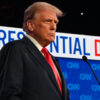
EXCLUSIVE: Judge in Trump’s Manhattan Trials Reviews Risk Assessment by Anti-Trump Psychiatrist
Security Commentary
Supreme Court Confirms No ‘Right’ for Foreigners to Enter US: The BorderLine
Politics News

Fact-Checking 17 Claims in First Biden-Trump Debate
Security News

Top DHS Official Refuses to Answer Whether Biden’s Border Policies Invite Terrorists

‘Incompetence’: Pentagon Doesn’t Know How Much Money It Sent to Chinese Entities for Risky Virus Research
Energy Politics Commentary
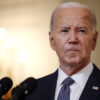
Biden’s Hypocrisy on Climate Change Painfully Obvious
International Commentary
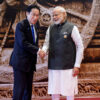
Biden’s ‘Xenophobic’ Slur Irks Key US Indo-Pacific Allies
Law News
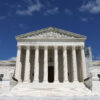
Supreme Court Throws Back ‘Chevron Deference’ in Ruling on Fishermen’s Case Against Government
Politics Analysis

GOP Lawmakers Aim to Strip Government of All DEI Programs
Economy Commentary
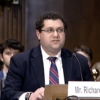
Wrecking the American Dream: The Problem With Today’s Economy
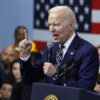
BREAKING: Supreme Court Strikes Down Injunction Preventing Government From Pressuring Big Tech to Suppress Free Speech
Politics News

House GOP Plans Legal Move Against Jan. 6 Committee in Steve Bannon Case

‘ABUSE OF POWER’: Texas Dad Suing for Retaliatory Arrest Reveals New Evidence of Corruption

EXCLUSIVE: Women’s Group Calls Military Draft Proposal ‘Unacceptable’
Law News

EXCLUSIVE: Migrants on Unregistered Mopeds in DC Use Food Delivery Apps—Violating Company Rules
Society Feature

EXCLUSIVE: Department of Defense Spending MILLIONS on Lab-Grown ‘Meat’
Society Commentary

After Another Ugly Antisemitic Incident in LA, the Left Has Few Words, No Answers

How California’s Paradise Became Our Purgatory
Law Commentary

Manhattan DA Proves Left-Wing Activists Are Above the Law in New York
Society News

‘We’re Turning the Corner’ in Fight Against Transgendering of Kids, Author Says
Education Analysis

American Parents Coalition Chief Counsels Moms, Dads on Explaining Culture Wars to Children

Female Athletes, Coaches Take on Biden’s War on Title IX
Robin Wolfenden prays at a makeshift memorial for victims outside the Covenant School building at the Covenant Presbyterian Church after a shooting, in Nashville, Tennessee, on March 28, 2023. (Brendan Smialowski/AFP/Getty Images)
The editor-in-chief and publisher of the Tennessee Star was ordered to appear in court last week and threatened with charges of contempt after his news website reported on an anonymously leaked collection of documents authored by Nashville mass shooter Audrey Elizabeth Hale.
Michael Patrick Leahy was joined by his attorneys in court on Monday for a “show-cause hearing,” where the journalist was asked by Chancery Court Judge I’Ashea Myles to demonstrate why his outlet’s reporting does not subject him to contempt proceedings and sanctions.
On March 27, 2023, Hale (born Audrey Elizabeth Hale) entered the Covenant School armed with three semiautomatic guns and killed six people, including three 9-year-old children. Hale, who was eventually shot and killed by police in the school, was a transgender man and former student at Covenant who harbored extremist sentiments on race, gender, and politics.
The massacre remains the deadliest mass shooting in Tennessee history.
Adam Goldstein, a senior attorney at the Foundation for Individual Rights and Expression, told RealClear last week that there is no legal basis whatsoever on which Myles can pursue contempt proceedings against Leahy.
“It has not been alleged by anyone to date that the Star or Leahy did anything unlawful to obtain this information,” Goldstein said, speaking of the leaked documents, “or that the information was not basically accurate as published.”
Reporting on leaked documents, however they were obtained by a source, is an essential journalistic practice protected by U.S. Supreme Court precedent.
A legal battle over Hale’s so-called manifesto kicked off soon after her identity was confirmed on the day of the shooting. Unlike other recent mass shootings, the perpetrator’s writings were not published online beforehand. Investigators with the Metropolitan Nashville Police Department and the FBI have refused to release Hale’s writings and other documents related to the investigation, stating in an internal memo their desire to protect “legacy tokens,” or articulations of the perpetrator’s motivations, from inspiring copycats.
Leahy and Star News Digital Media are plaintiffs in two ongoing lawsuits that seek to compel the Metropolitan Nashville Police Department and the FBI, respectively, to release the documents. Myles presides over the Metropolitan Nashville Police Department suit.
Amid these pending suits, the Tennessee Star received images of Hale’s diary from an undisclosed source. In a series of recent reports for The Star, Tom Pappert detailed elements of “nearly four dozen images of notebook pages written by Hale that were recovered from the vehicle she drove to the Covenant School,” supplied to The Star by an anonymous source familiar with the investigation.
On June 10, Myles ordered Leahy to court to prove that he had not violated a court order by reporting on the leaked documents. Tennessee law protects the reporting, and attorney Daniel A. Horwitz was unable to get clarity from Myles on which orders Leahy might have run afoul of.
Myles’ legal theory appears to rely on the notion of prior restraint, which can, in certain cases of extreme risk—such as threats to national security or the possibility of imminent loss of life—legally suppress speech or material before it is published.
In practice, legal prior restraints are rare, perhaps even unconstitutional. “Prior restraints are the least justifiable forms of censorship in First Amendment tradition,” Goldstein says, adding that it would require extraordinary circumstances for a prior restraint claim on speech to be constitutional. “If the prior orders prohibited publication of this material, they’re presumptively unconstitutional prior restraints.”
While last week’s hearing ended without formal action against him, Leahy remains in legal jeopardy, according to The Star .
In a statement provided exclusively to RealClear, Leahy emphasized the legality of his outlet’s reporting. “At the Tennessee Star,” he wrote, “we’ve provided an important public service by reporting the details of 80 pages of the Covenant killer’s journal, which we obtained legally.”
Leahy additionally emphasized that The Star has not yet published the documents themselves, opting instead to report on the most newsworthy aspects of the diary pages provided to them. Those included revelations that Hale was motivated to die by a “ pure hatred of [her] female gender ” and referred to herself as “ white nothingness ,” among other salient details.
Hale had reportedly been a mental-health patient for 22 years at a Vanderbilt clinic known for practicing a controversial transgender medicine program that one doctor referred to as “big money,” according to The Star .
Those revelations provide important insight into Hale’s mental state and motivations preceding the atrocity, information that is typically made public soon after similar mass-shooting events. For example, when Rolling Stone reviewed the manifesto of Jacksonville, Florida, shooter Ryan Christopher Palmeter, an avowed white supremacist, in 2023, no similar legal threats were issued.
The New York Post is so far the only national outlet to cover this case as a First Amendment threat, along with numerous local Tennessee publications and independent platforms. Coverage has tended to come from the right side of the political spectrum. Leahy appeared on the conservative news program “The Gorka Reality Check,” and on Steve Bannon’s “ War Room .”
The Transgender Terror Threat @MichaelPLeahy joins The Gorka Reality Check pic.twitter.com/Tks98iR0y8 — Sebastian Gorka DrG (@SebGorka) June 24, 2024
In its coverage , The New York Times gives the court summons a single sentence, instead focusing on “the arguments for and against releasing the writings,” a troubling default position for a newspaper to take. Many conservatives feel this asymmetry in coverage represents the mainstream media’s unwillingness to highlight the role Hale’s transgender identity might have played in the attack.
Before we can debate what led Hale to commit such a heinous act, we must have a full accounting of the relevant documents. It is first and foremost a question of the First Amendment, not of gender politics.
The First Amendment implications of this episode are obvious and grave: A local publisher is threatened with potential criminal charges for merely reporting on legally obtained documents. Leahy’s treatment also raises concern over the increasing hostility that judiciaries express toward the journalistic practice of maintaining source-confidentiality. Two days after issuing Leahy’s order to appear and show cause, the court expanded Myles’ directive to include a local government official suspected of leaking the documents to The Star. What began as a narrow threat to Leahy’s First Amendment rights ballooned into a hunt for his confidential source.
In this way, Leahy’s case mirrors that of former Fox and CBS investigative reporter Catherine Herridge, who was held in civil contempt by a U.S. District Court judge in 2019 for failing to divulge the identity of one of her sources for a 2017 story about an FBI investigation . Herridge was threatened with a fine of $800 a day until she revealed her source(s) to the court. That penalty has been stayed pending appeal but remains potentially enforceable. Herridge published an account of her legal battle in The Free Press earlier this week.
Ordering Leahy to reveal his source, thereby opening that source up to criminal prosecution, would violate a ruling in the landmark 1971 Pentagon Papers Supreme Court case , wherein six justices decided that The New York Times was protected by the First Amendment when publishing confidential Pentagon documents it had received from military analyst Daniel Ellsberg.
Taken together, these cases represent a remarkable departure in recent years from the formerly ironclad protections afforded to journalists working with confidential documents. Whether on the state or federal level, these efforts to curtail a free press in court must be repudiated. One would hope that the national press would unify against this gathering threat to its collective freedom.
Originally published at RealClearWire.com
We publish a variety of perspectives. Nothing written here is to be construed as representing the views of The Daily Signal.
Related posts:
- Scotland’s New Transgender ‘Hate Crime’ Law Already Showing How It Leads to Tyranny
- Nashville Shooter’s Manifesto Released Despite FBI Resistance
- DOJ Lawsuit Over Banning Sex Changes for Kids Doesn’t ‘Hold Water,’ Legal Expert Says

IMAGES
VIDEO
COMMENTS
Describe how the Hay's Code affected 20th-century American mass media. Figure 15.3. Attempts to censor material, such as banning books, typically attract a great deal of controversy and debate. ... censorship in the media is often hotly debated. The First Amendment states that "Congress shall make no law…abridging the freedom of speech ...
3! Media Censorship: Freedom Versus Responsibility. Censorship is used to officially control and suppress any expression that can potentially. jeopardize the order of the state. Historically ...
Key Findings. Media freedom has been deteriorating around the world over the past decade. In some of the most influential democracies in the world, populist leaders have overseen concerted attempts to throttle the independence of the media sector. While the threats to global media freedom are real and concerning in their own right, their impact ...
Media censorship is a hallmark of authoritarian regimes.1 Countries such as China spend a tremendous amount of resources to block foreign websites so that uncensored, regime-threatening information is out of citizens' reach. Scholars have long suggested that censorship is key to the popular support and stability of these regimes (Ford, 1935).
CENSORSHIP & THE MEDIA* A FOREWORD. BARRY P. McDONALD*. This symposium edition of the Notre DameJournal of Law, Eth-. ics & Public Policy focuses on issues that are of unquestionable importance in a self-governing society that places a high value on an uninhibited flow of human expression to make good deci-sions about how we live, and to ...
You can use an index such as Communication & Mass Media Complete (CMMC) to find articles or use the search box at the ... This bibliographic essay, focusing primarily on the United States, demonstrates that censorship can be institutional, individual, and by practice, a way to restrict or expunge objectionable material, information, or ...
Media censorship is a hallmark of authoritarian regimes. We conduct a field experiment in China to measure the effects of providing citi-zens with access to an uncensored internet. We track subjects' media consumption, beliefs regarding the media, economic beliefs, political attitudes, and behaviors over 18 months.
China has one of the world's most restrictive media environments, relying on censorship to control information in the news, online, and on social media. The government uses libel lawsuits ...
ISBN: 9780872893115. From public aid to parochial schools to censorship of library books, Americans are intensely interested in their expressive rights of speech, press, assembly and religion. They are also concerned about censorship, tolerance of pornography and obscenity, and about their security in a post 9-11 world.
Day argues that censorship reduces the honesty of mass media, intimidates journalists and endangers journalistic freedom. Censorship can be used to control the information communities receive from ...
In 2020 alone, according to UNESCO, 62 journalists were killed just for doing their jobs. Between 2006 and 2020, over 1,200 media professionals lost their lives in the same way. In nine out of ten cases, the killers go unpunished. In many countries investigating corruption, trafficking, human rights violations, and political or environmental ...
This essay argues that the recent scholarship on misinformation and fake news suffers from a lack of historical contextualization. The fact that misinformation scholarship has, by and large, failed to engage with the history of propaganda and with how propaganda has been studied by media and communication researchers is an empirical detriment to it, and
This essay primarily focuses on responses to three different open-ended questions and includes a number of quotations to help illustrate themes and add nuance to the survey findings. Quotations may have been lightly edited for grammar, spelling and clarity. Here are the questions used for this essay, along with responses, and its methodology.
Media Censorship and Its Impact. Topic: Censorship Words: 1226 Pages: 5. The freedom of information, the press and free speech is arguably an important human rights deeply rooted in the structures of democracy. Democracy, which largely derives its origin from the US, is one of the legal rights that should be provided and protected in the modern ...
Censorship in Social Media. The number of people accessing information and communication technologies has reached a critical mass around the world, especially with an emerging media outlet like social media. As a result, governments and social media companies felt the need to enforce more stringent monitoring and suppress the circulation of ...
Censorship of the Internet and Mass Media. The conversation regarding censorship amongst states, meaning nations or countries in this context, has been a highly contested and conflicted debate for over a century. According to The Merriam-Webster Dictionary, "censorship is suppression of speech, public communication, or other information, on ...
Figure 15.3 Attempts to censor material, such as banning books, typically attract a great deal of controversy and debate. To fully understand the issues of censorship and freedom of speech and how they apply to modern media, we must first explore the terms themselves. Censorship is defined as suppressing or removing anything deemed objectionable.
Mass Media Censorship In The United States. The 1st Amendment states that Congress shall make no law respecting an establishment of religion, or prohibiting the free exercise thereof; or abridging the freedom of speech, or of the press; or the right of the people peaceably to assemble, and to petition the government for a redress of grievances ...
English. Nazi Propaganda and Censorship The Nazis wanted Germans to support the Nazi dictatorship and believe in Nazi ideas. To accomplish this goal, they tried to control forms of communication through censorship and propaganda. This included control of newspapers, magazines, books, art, theater, music, movies, and radio.
Summary. Hate speech online has been linked to a global increase in violence toward minorities, including mass shootings, lynchings, and ethnic cleansing. Policies used to curb hate speech risk ...
Mass media are of several types which are means of people's expression around the world. Media censorship must be applied to prevent unrestrained topics which are inappropriate for some age groups or those topics concerning racism. ... "Censorship In Media Essay," Free Essay Examples - WowEssays.com, 13-Nov-2019. [Online]. Available: https ...
PAGES 5 WORDS 2303. Media Censorship. The maneuver of public opinion in America holds the absolute influence in the present world. Their strength is not isolated and uncongenial; it touches each household in America and executes its spirit approximately all through the day. It is the strength that influences and shapes the psyche of nearly all ...
Solutions to Mass Media Censorship Essay. Censorship is the repression of information and ideas that flow from society. The Communist Party of China (CPC) is the known body that mandates censorship in the People's Republic of China (PRC) (Guo & Feng, 2012). In this regard, China offers a captivating case study for students, particularly on ...
Charlie Tidmarsh edits RealClear's censorship page and contributes writing on free speech issues. The editor-in-chief and publisher of the Tennessee Star was ordered to appear in court last week ...
They discuss court suppression of a newspaper that published the diary of Audrey Elizabeth Hale, a mentally ill person responsible for a 2023 mass school shooting at a Christian school in ...